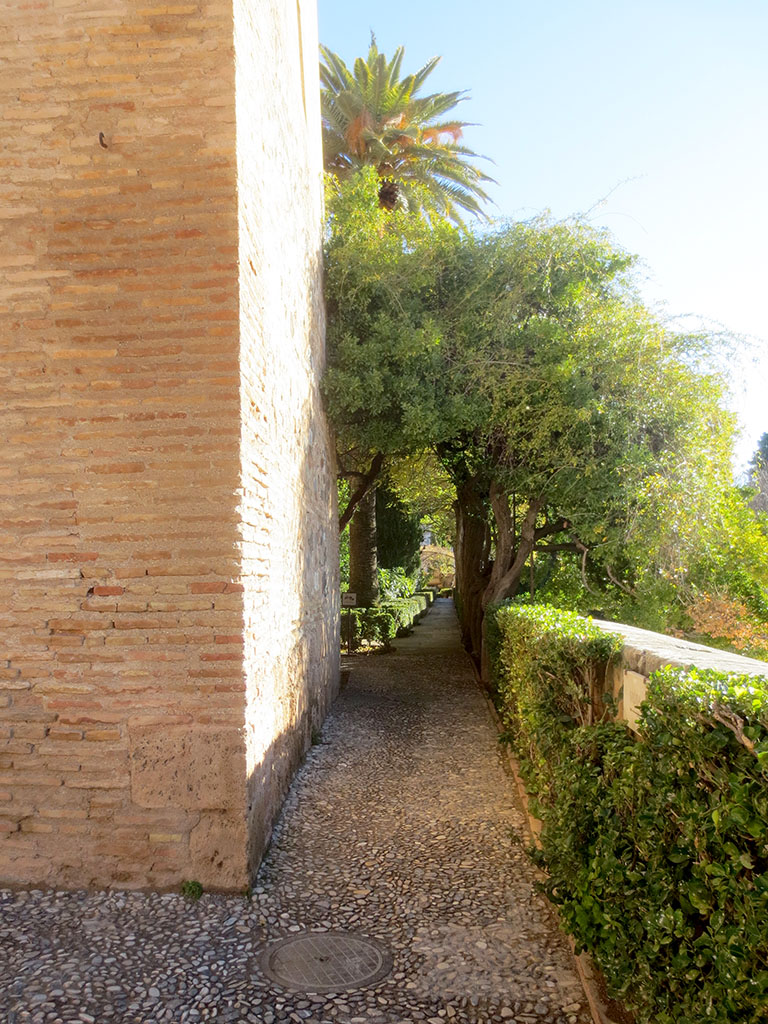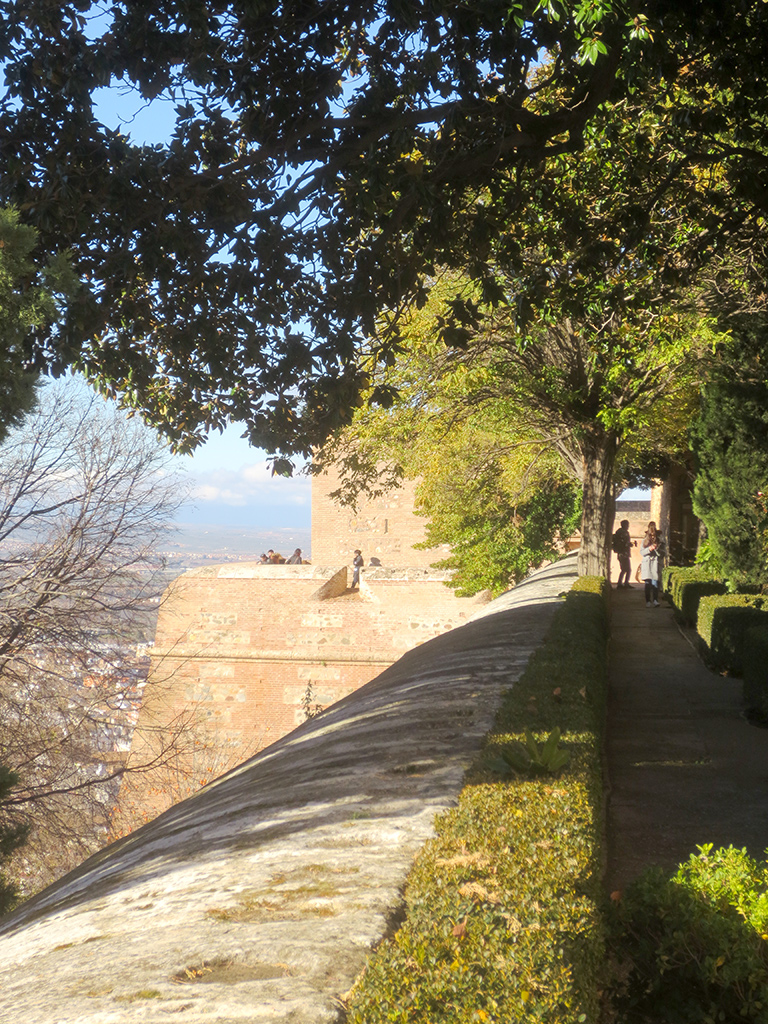Granada’s main draw is the Alhambra, a sprawling complex of palaces, gardens and towers that loom over the city.
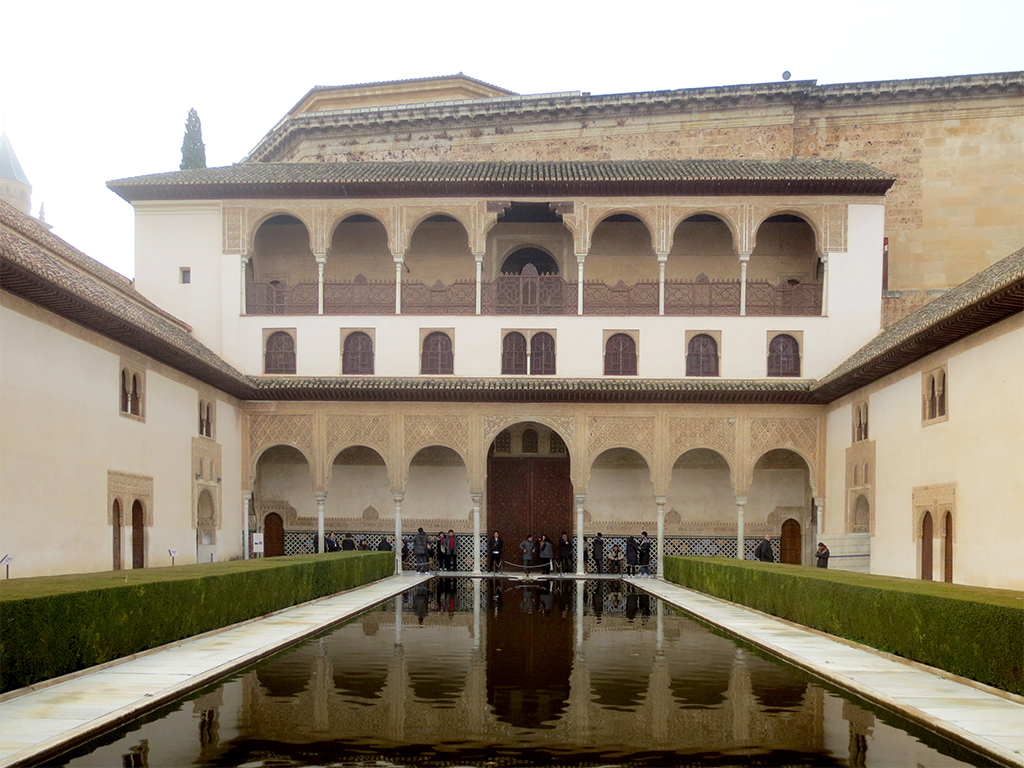
Construction began in 889, on top of older Roman fortifications, but most of the palaces were built during the 12th and 13th centuries by the Emirate of Granada, the series of Muslim Emirs and Sultans who ruled the city at that time.
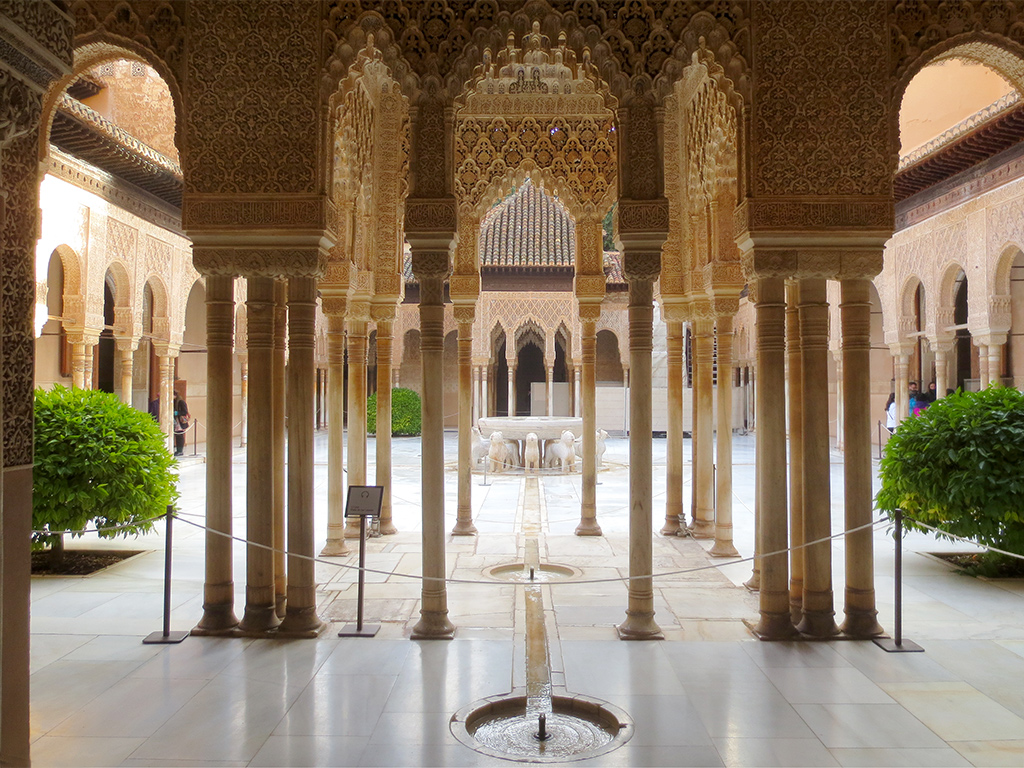
Tickets to visit the Alhambra palaces are tightly controlled — they are associated with your passport, and must be purchased in advance. We bought ours months beforehand. You need to pick a day and time in the future and then cross your fingers that the weather will be nice, because there are no refunds and no rescheduling is permitted, even if the weather is miserable or you come down with food poisoning or a broken leg.
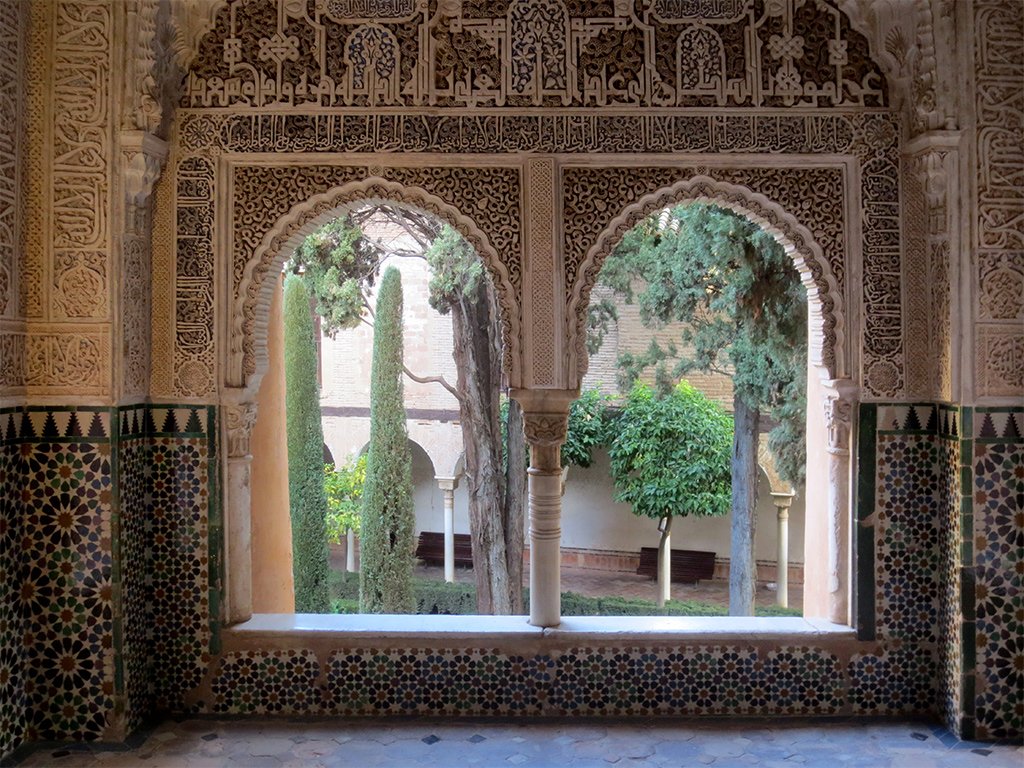
The day before we visited was dark, windy, and rainy, so we felt fortunate to end up with a sunny day, even though the temperatures were barely above freezing when we arrived and a slight fog was still clearing over the hills below.
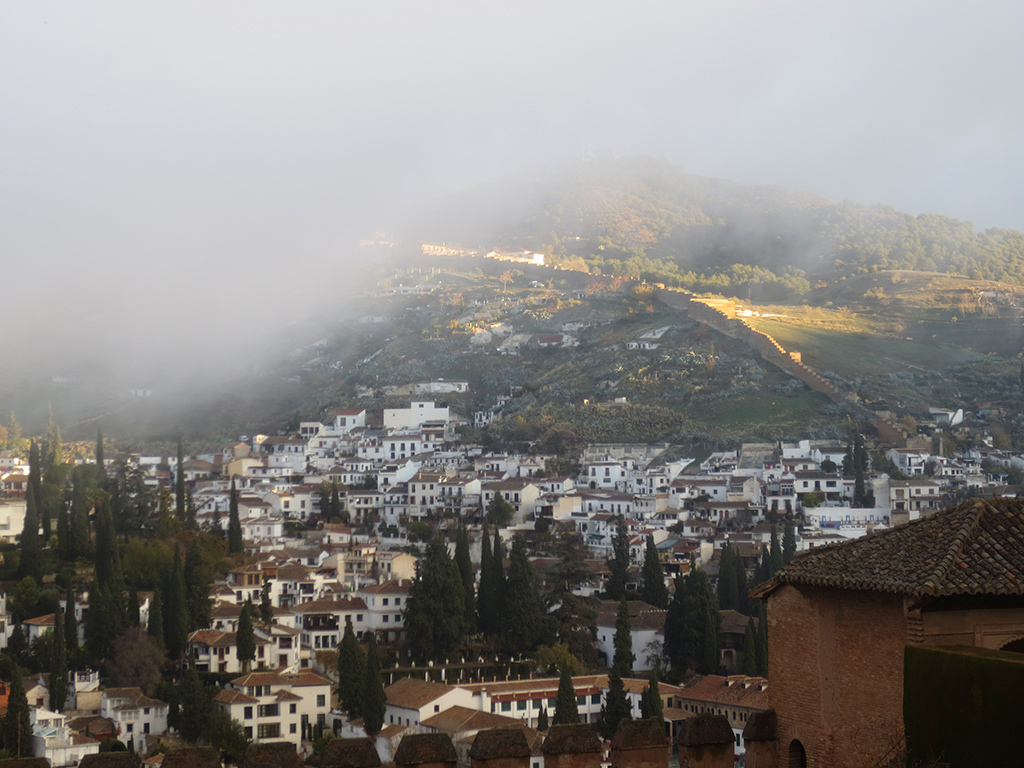
It took about 20 minutes to hike up Cuesta de Gomérez from Plaza Nueva in central Granada. Although steep, the walk was pleasant and took us through beautiful forested hills lined with small streams, waterfalls, and plantings. Every now and then glimpses of the Alhambra towers appeared through the trees, growing ever larger.
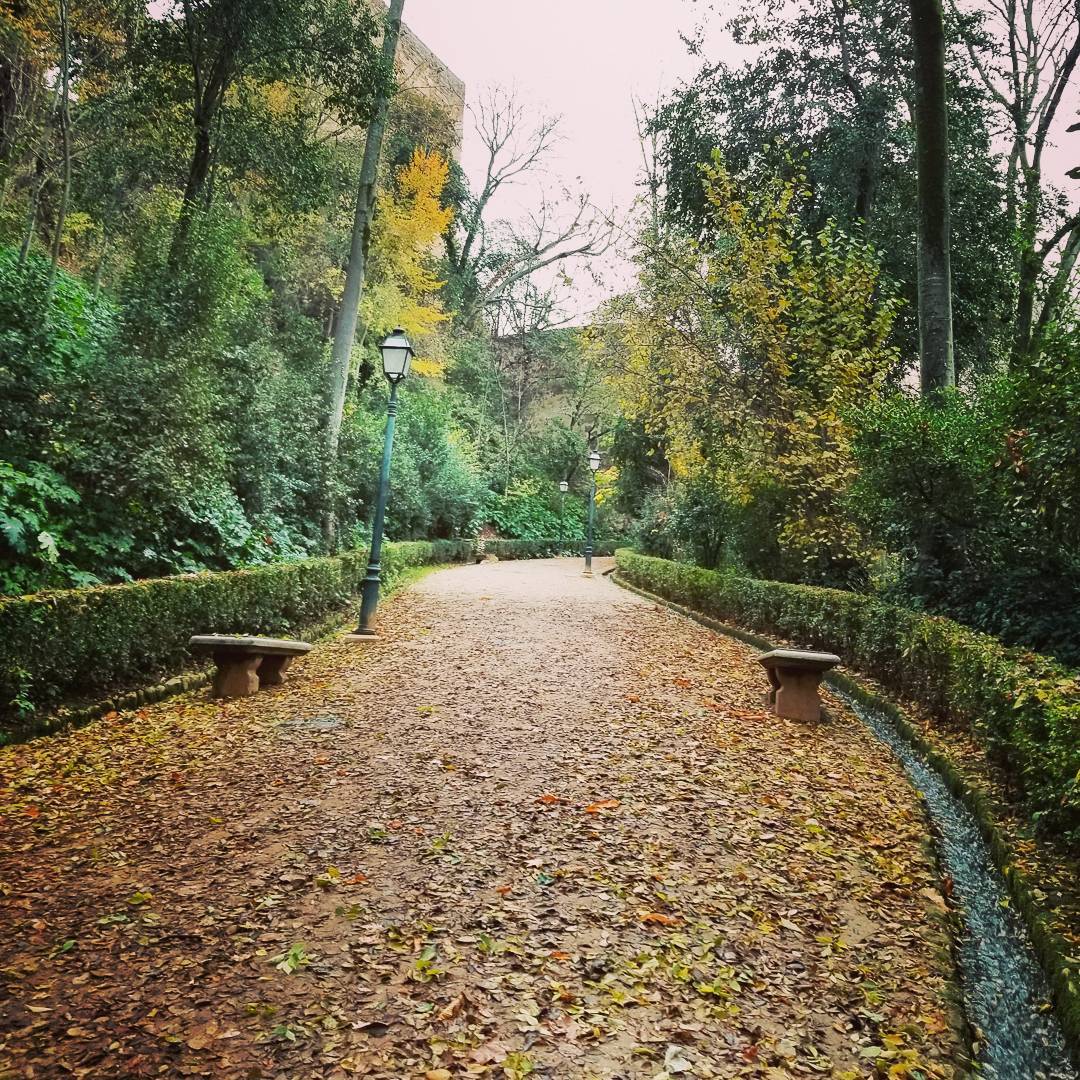
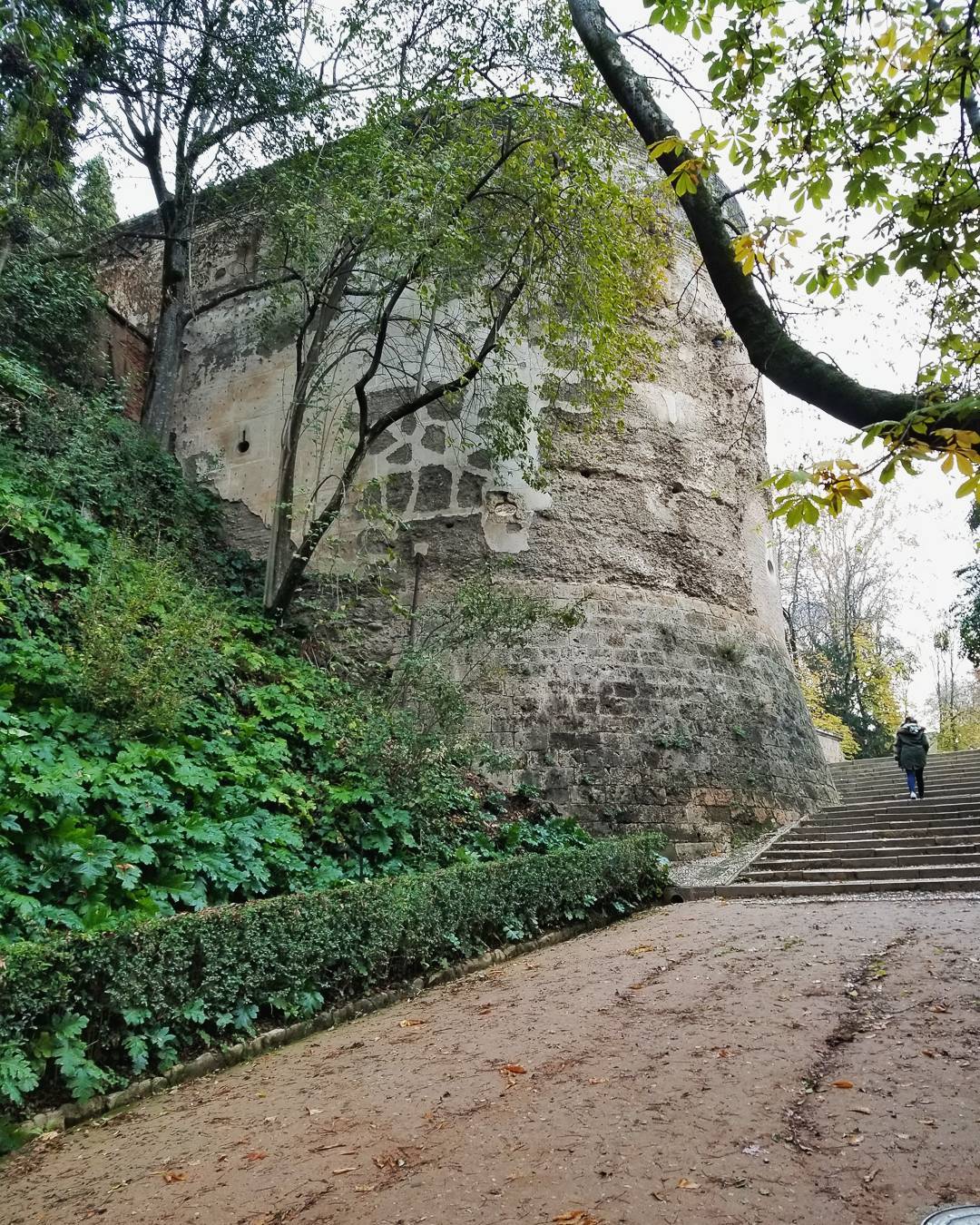
Along the way there are numerous convenient benches — the benches look crooked, but they are in fact straight. It’s the ground that is steeply sloped.
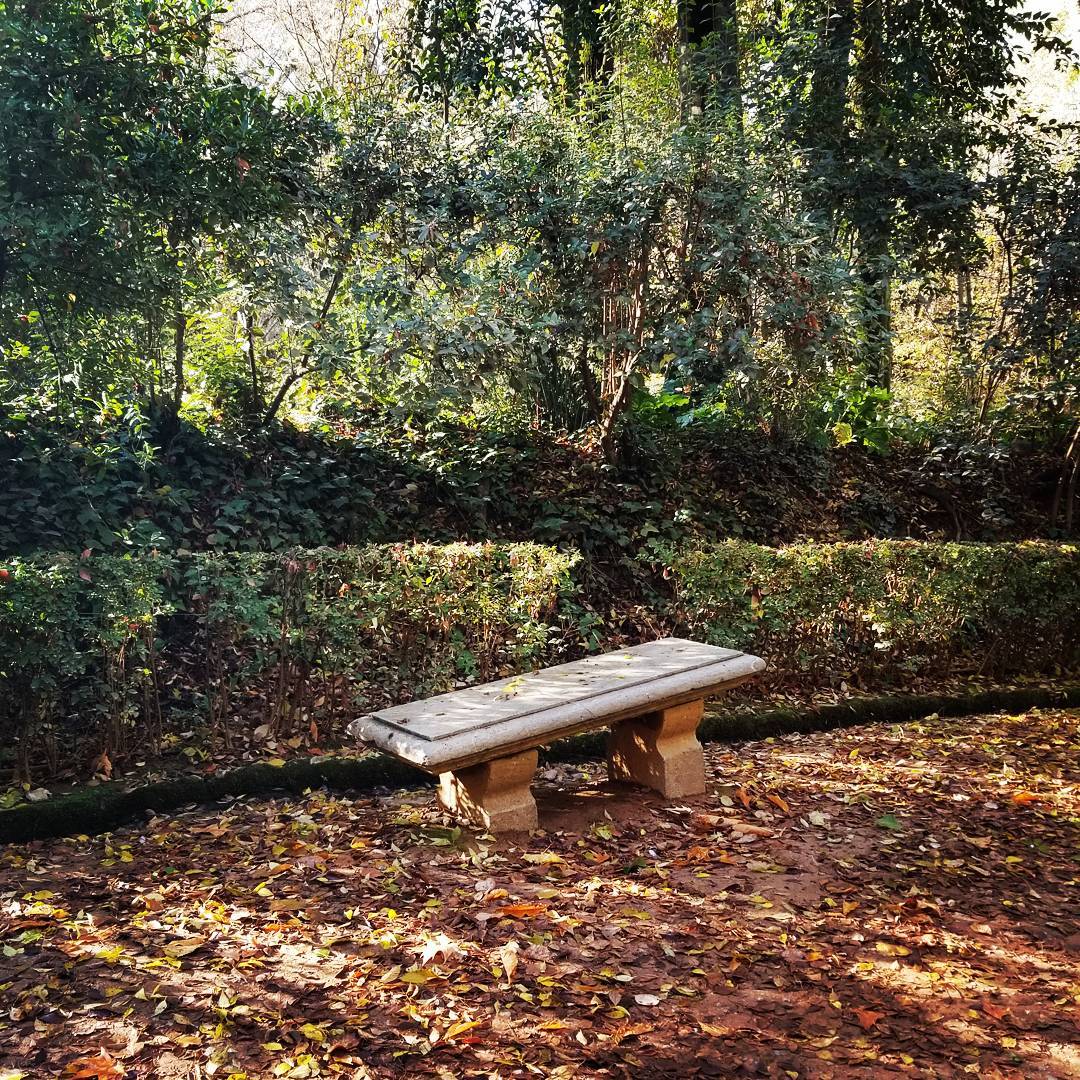
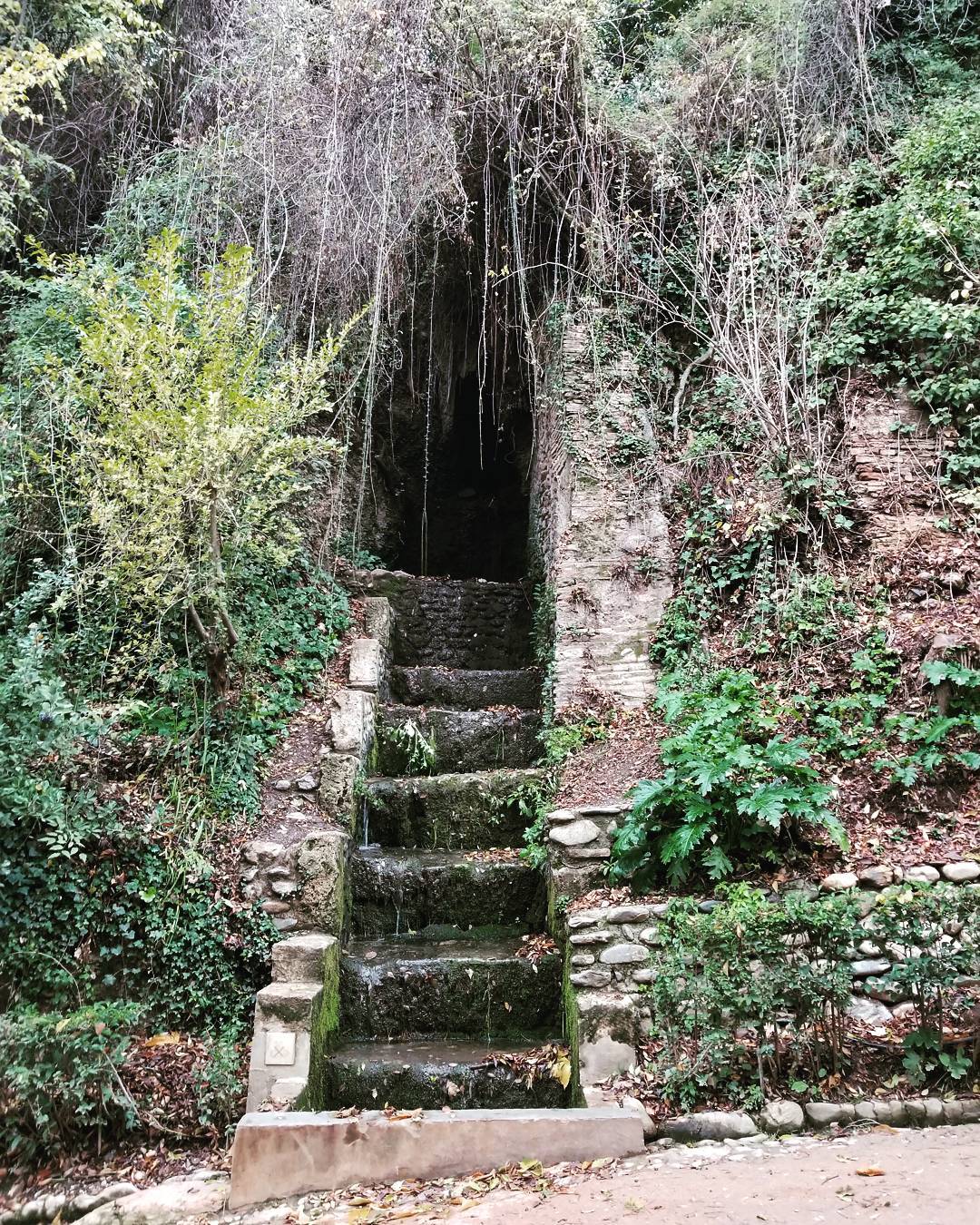
We passed through the Puerta de las Granadas (Gate of the Pomegranates) — the word “granada” is Spanish for “pomegranate” and the fruit is the official symbol of the city.
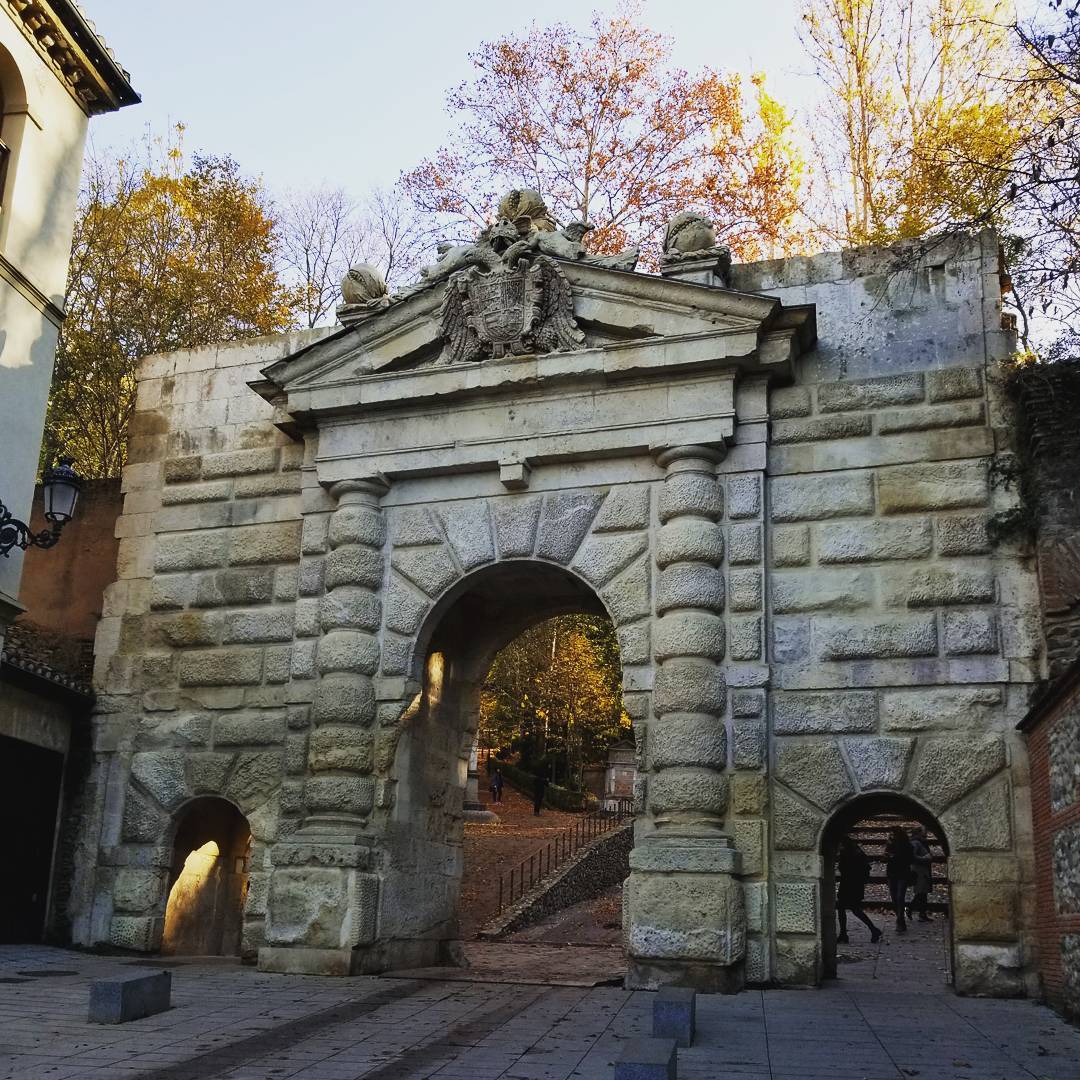
We also passed a statue of American writer Washington Irving. Irving visited the Alhambra in 1829 and found it abandoned. So, he did the logical thing and moved in. He stayed there on and off for several years while writing Tales of the Alhambra, published in 1832. The interest generated by this booked helped lead to the eventual restoration of the complex.
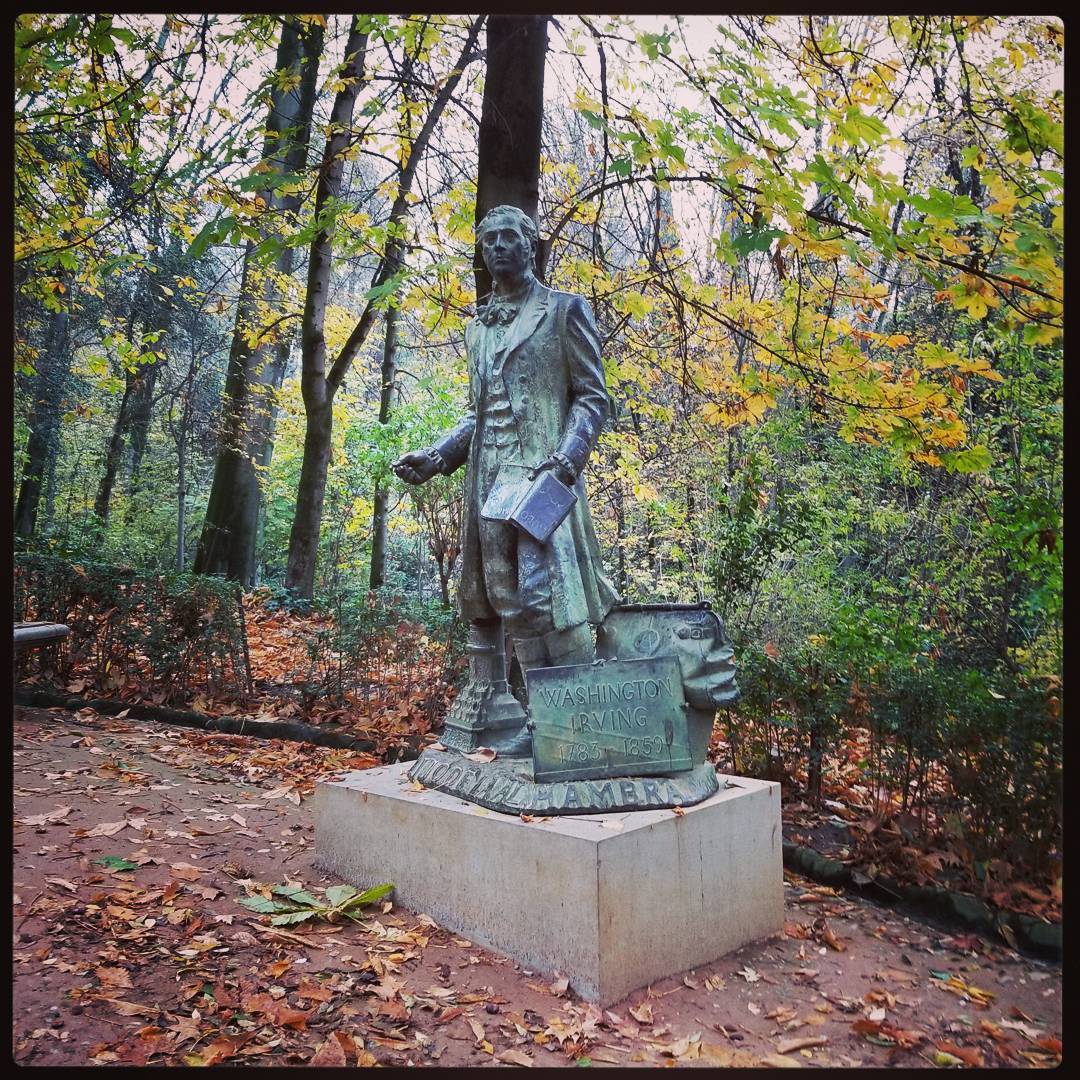
Once at the top, we entered the Alhambra through the intimidating Puerta de la Justicia (Gate of Justice) and then made our way immediately to the palaces, just on time for our 9am tickets.
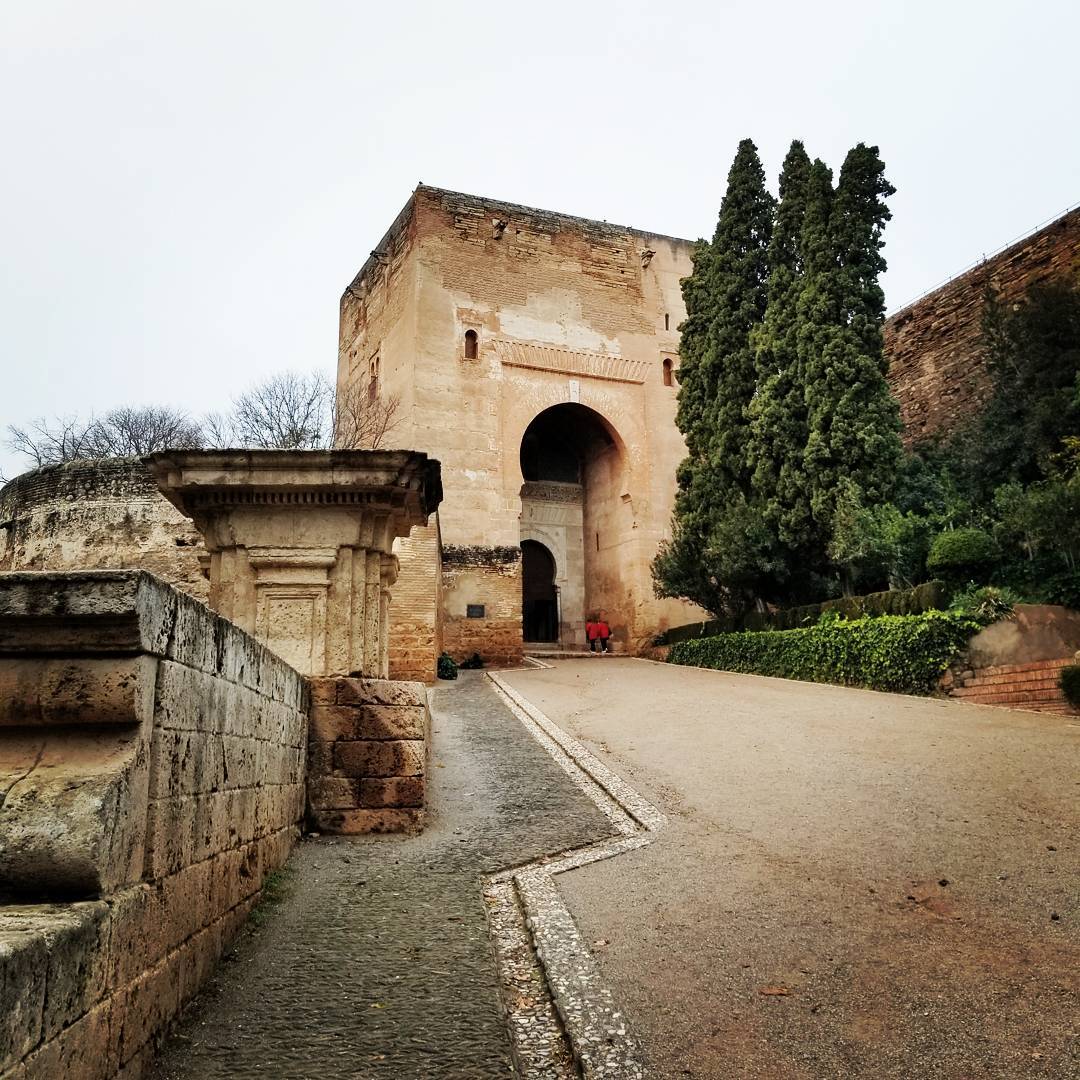
We skipped the audio guide (too overwhelming) and simply wandered the complex with everyone else, taking photos of the things that caught our eyes. There were many.
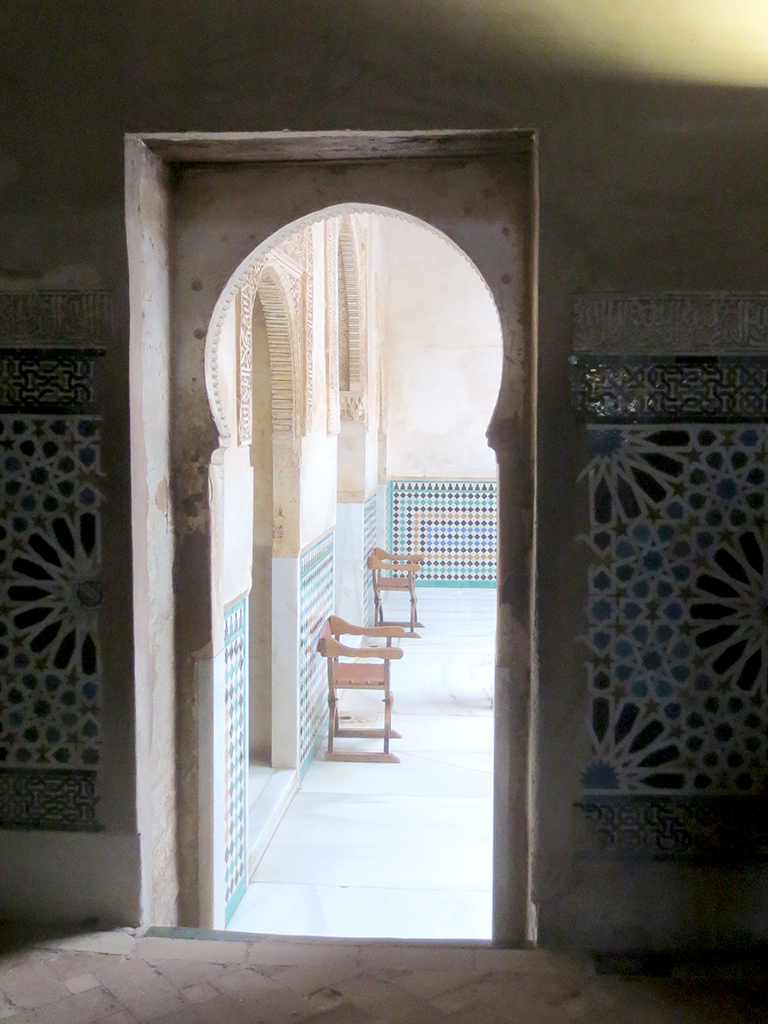
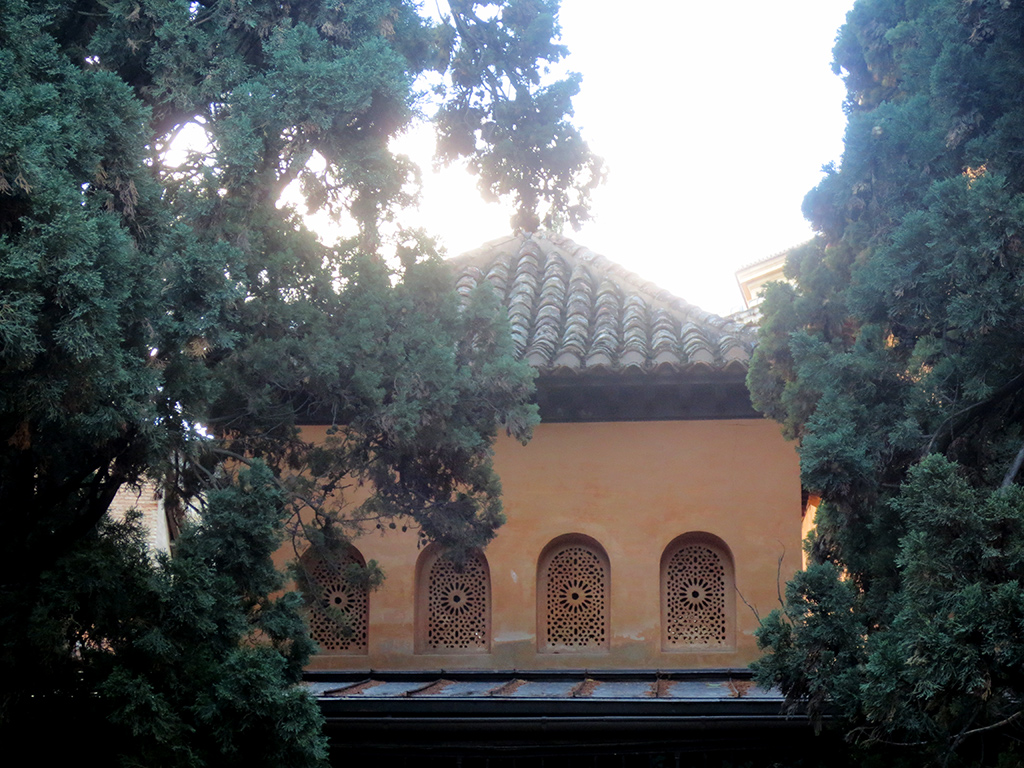
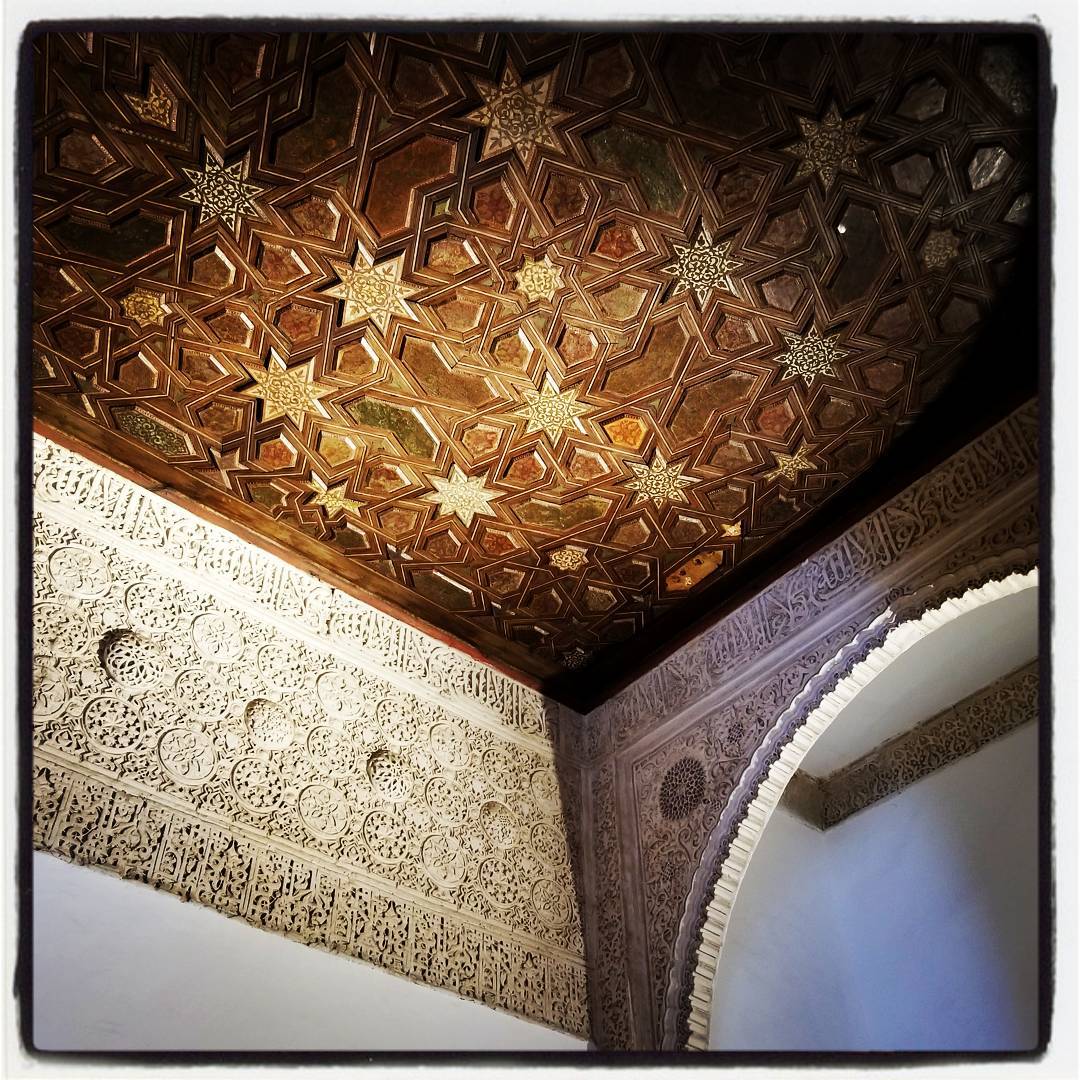
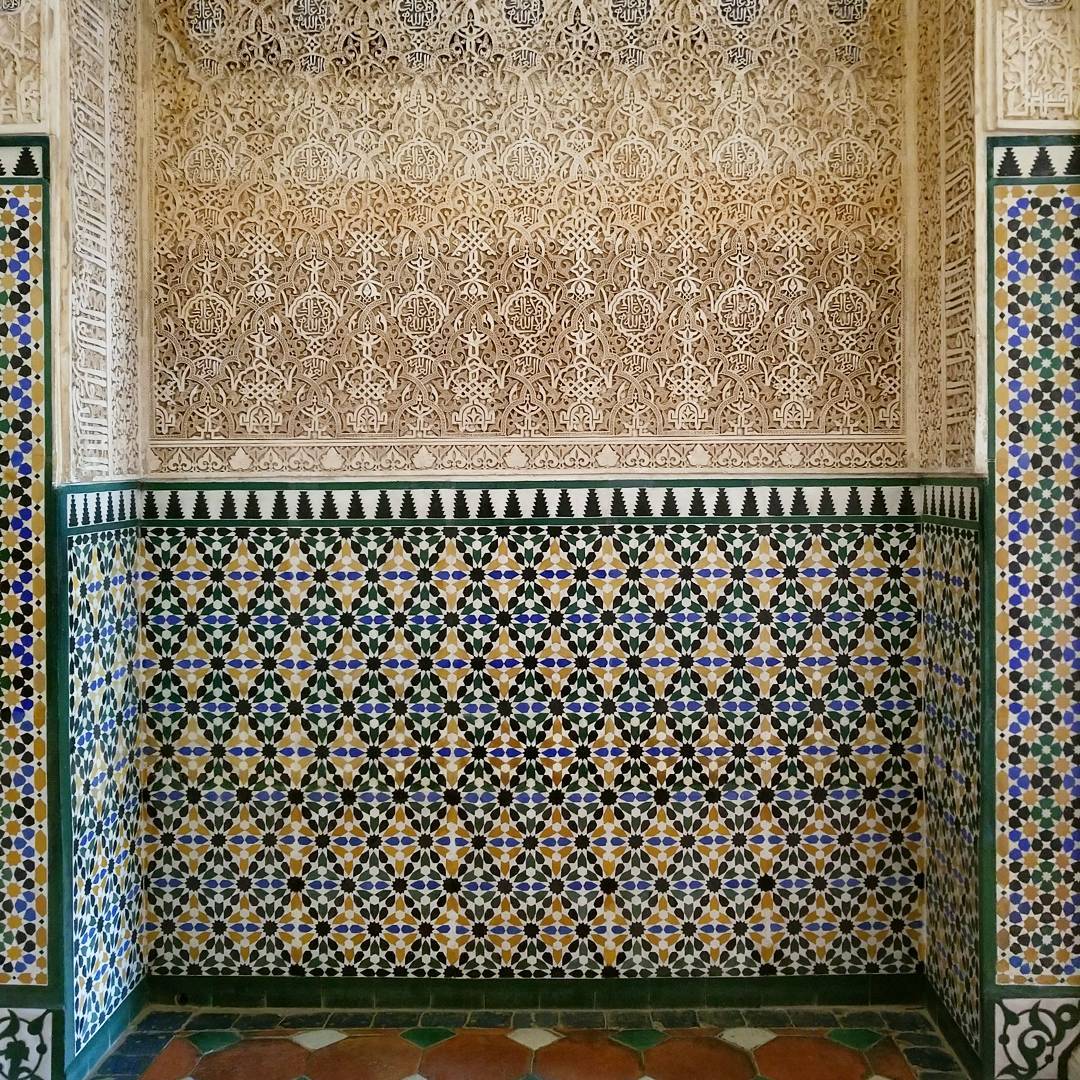
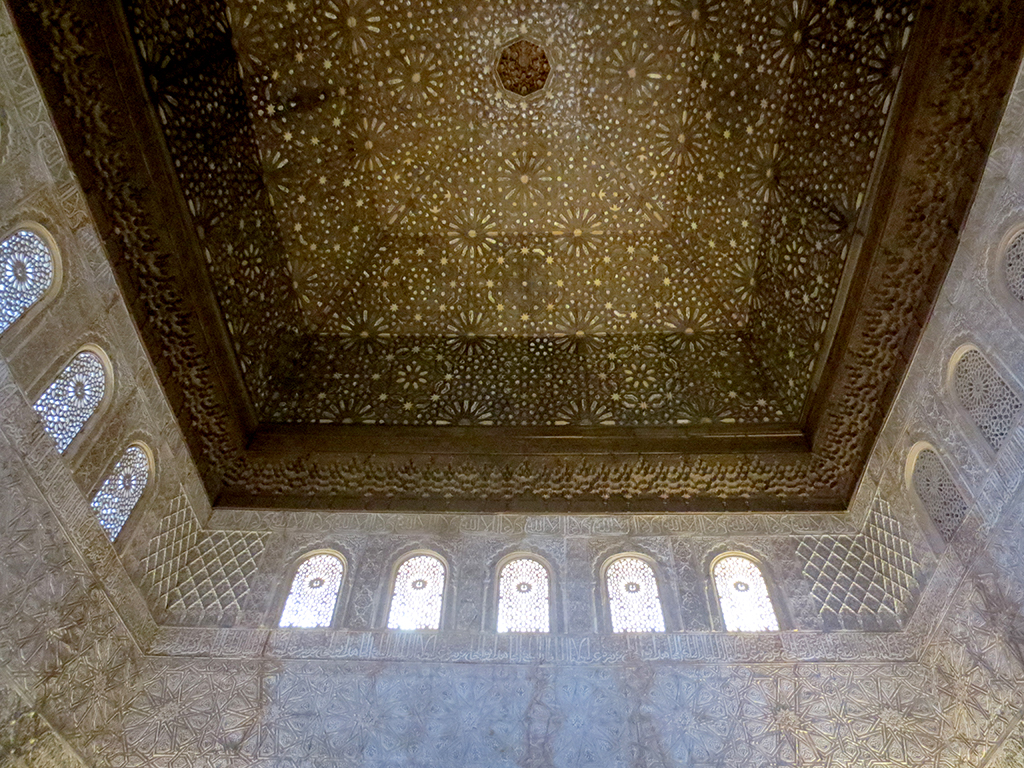
The off-season crowds were manageable, particularly as we got further from the entrance and everyone began to spread out. We were able to find time and space for peaceful observation and reflection — and obstruction-free photos!
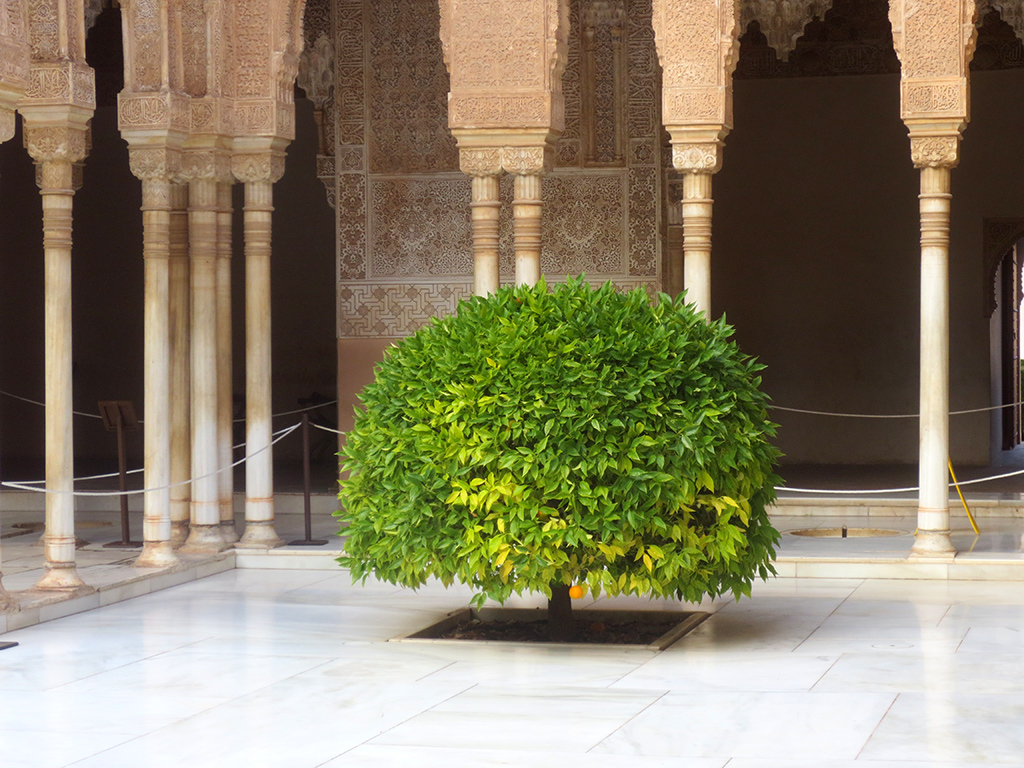
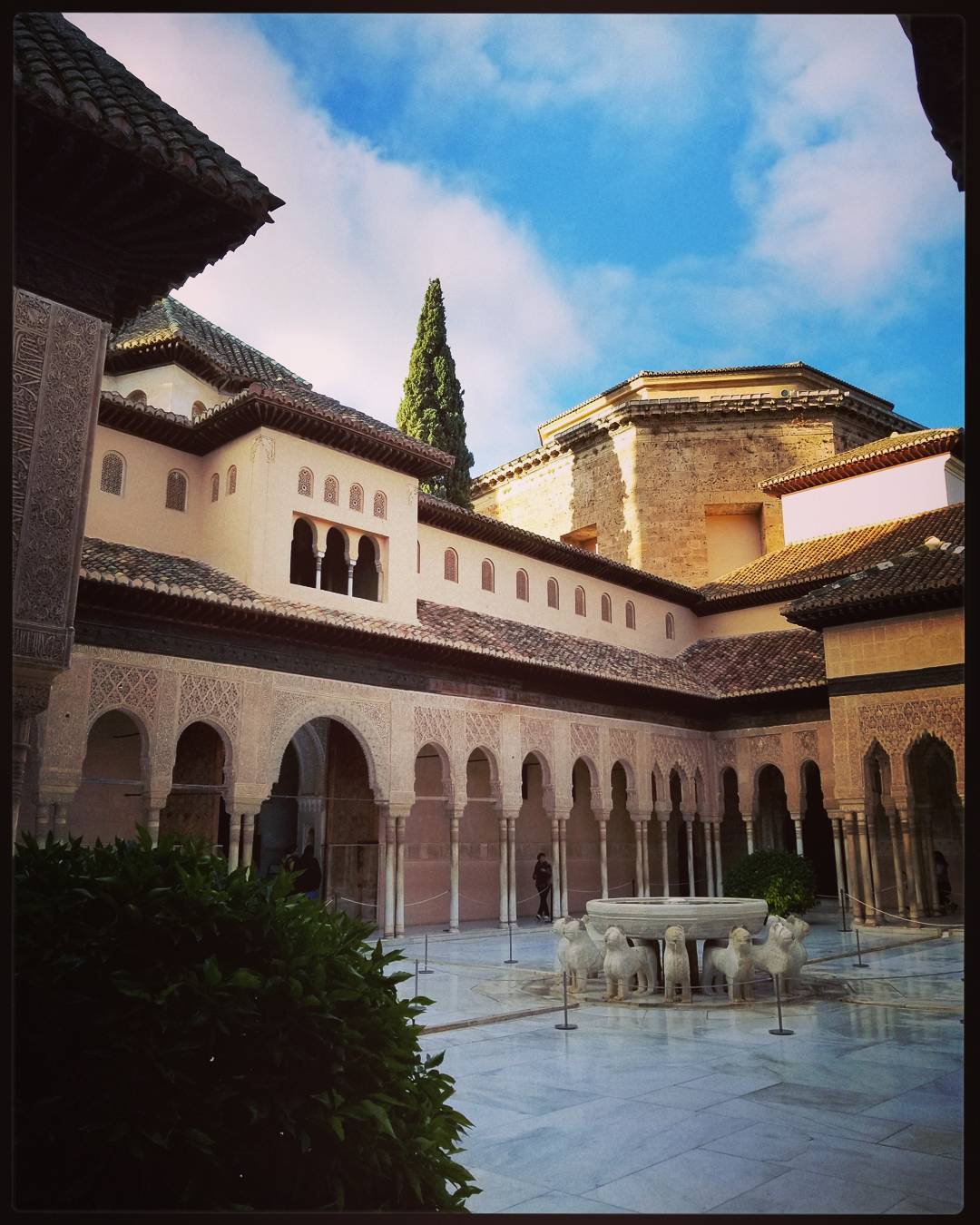
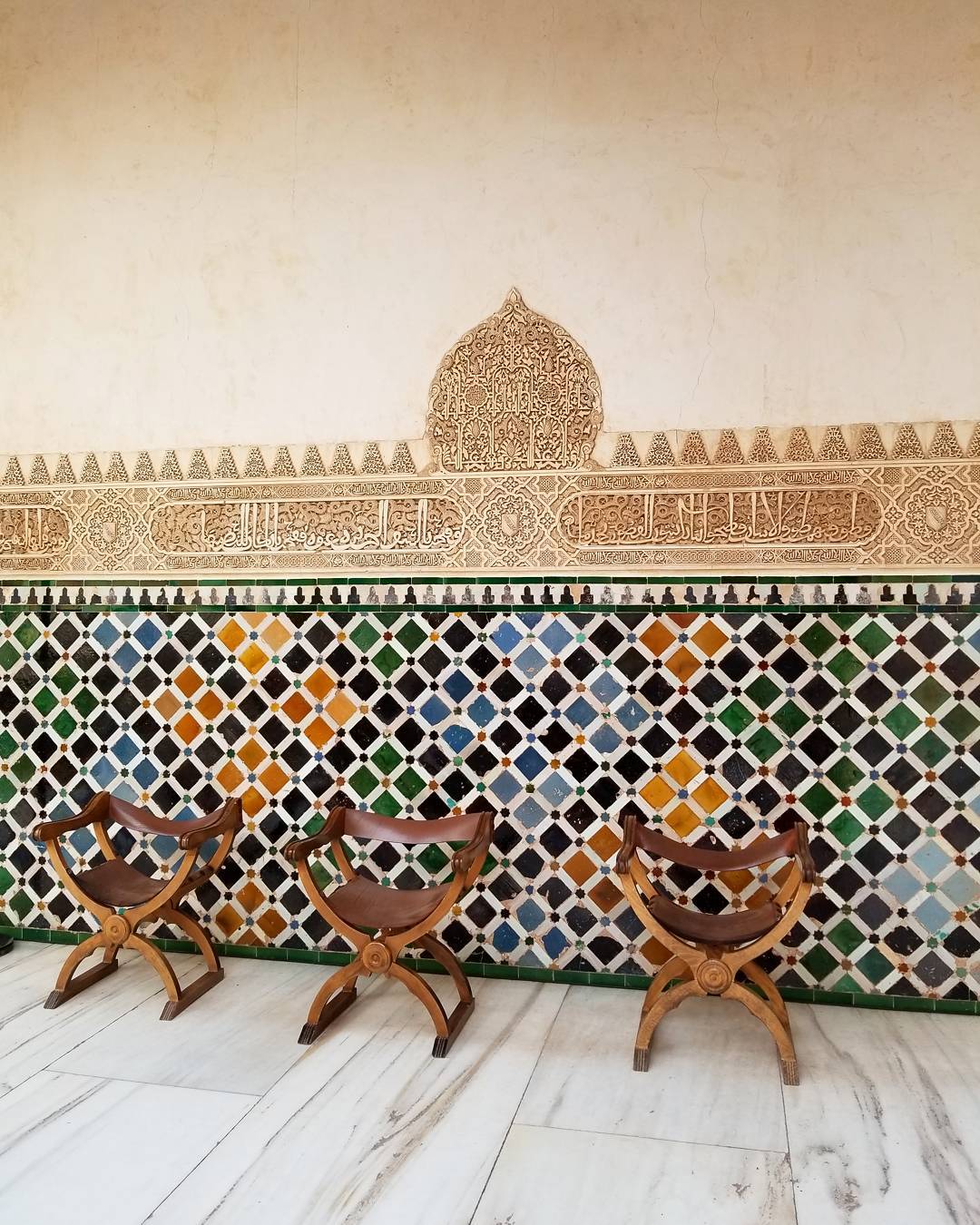
Although some of the architecture and decoration is very intricate, the Mudéjar style can also be very minimalist and symmetrical, and quite peaceful and calming. You can see how in a hot, desert climate a series of breezy open rooms, shady gardens, and gently trickling water would be very appealing.
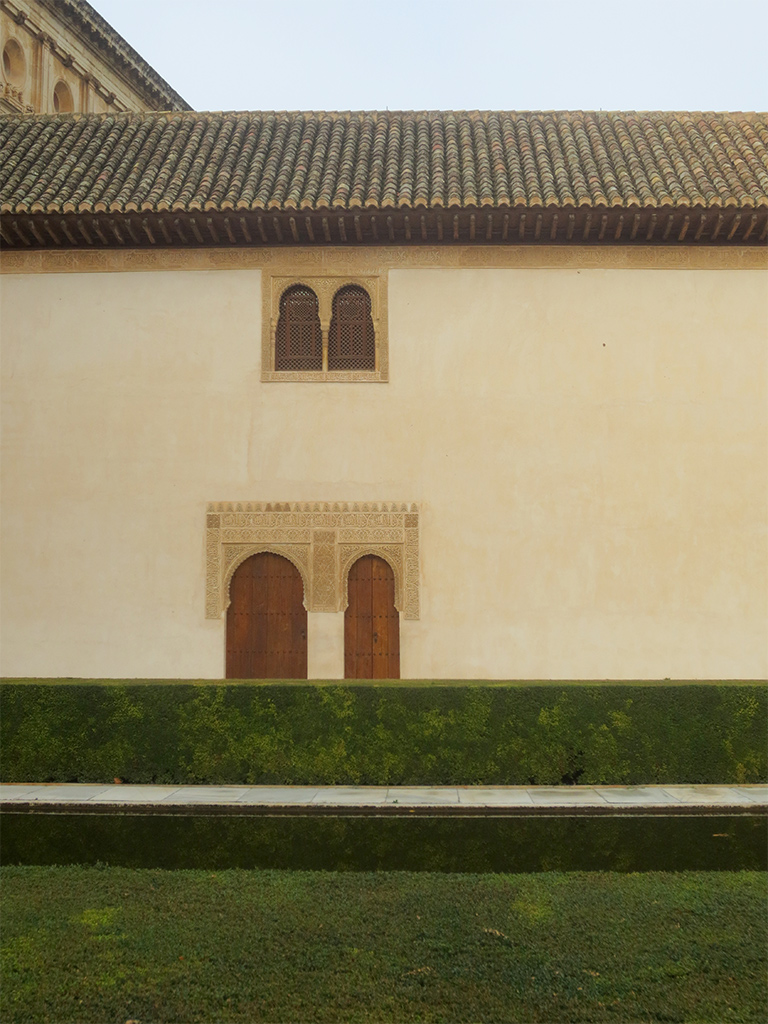
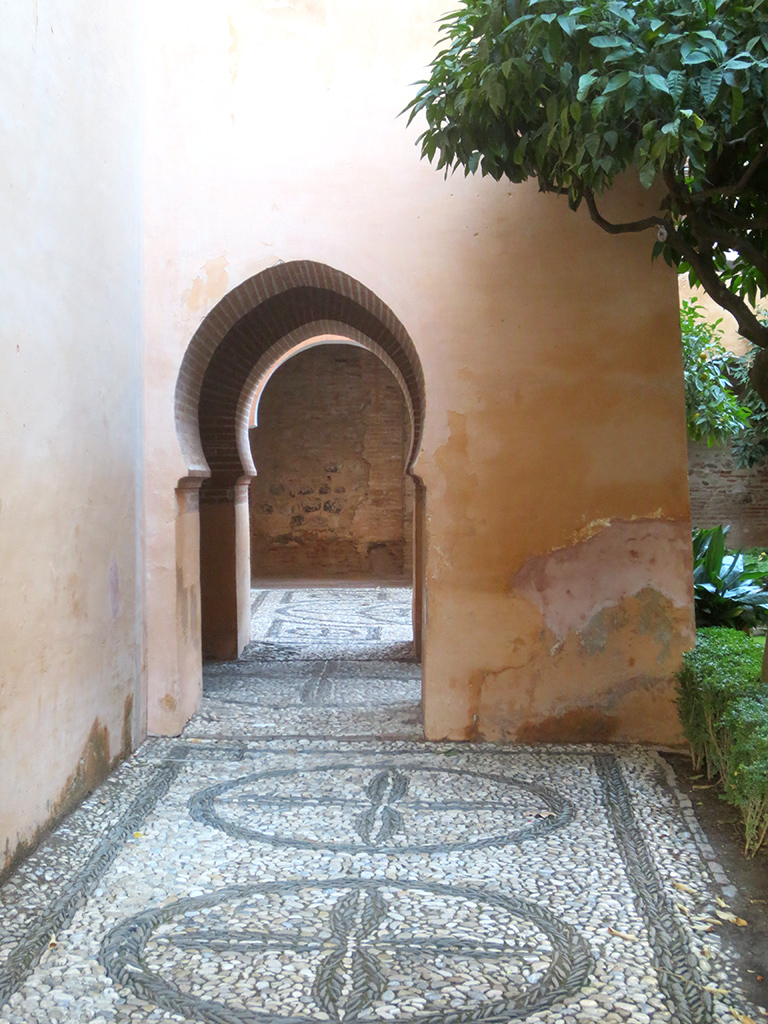
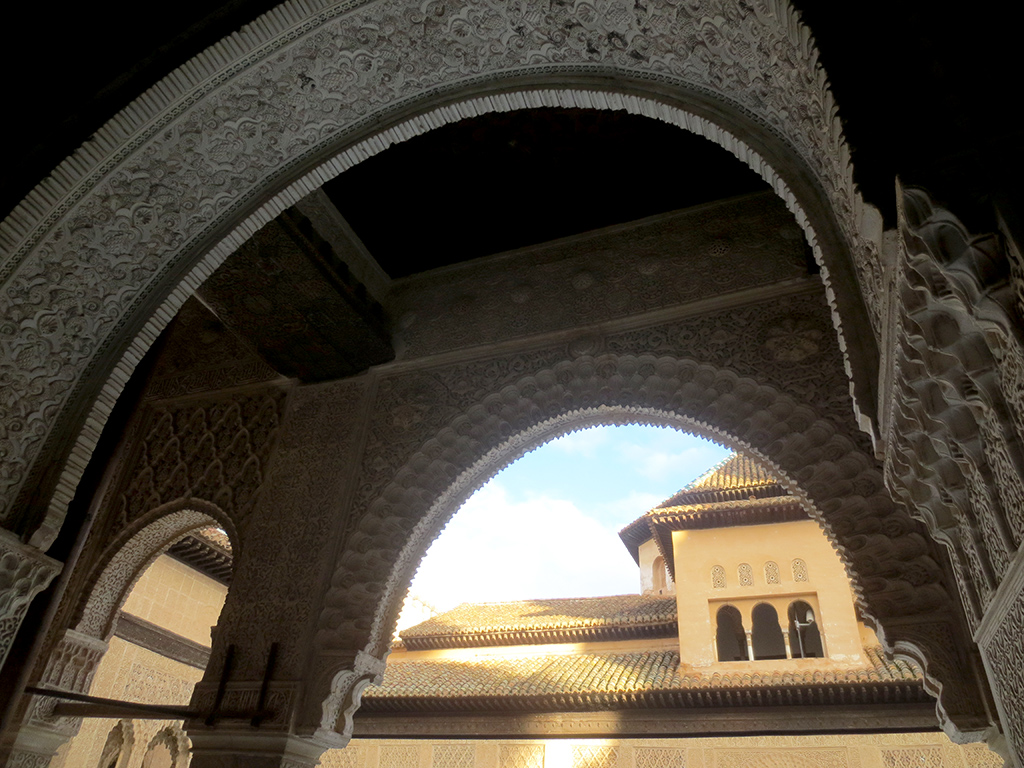
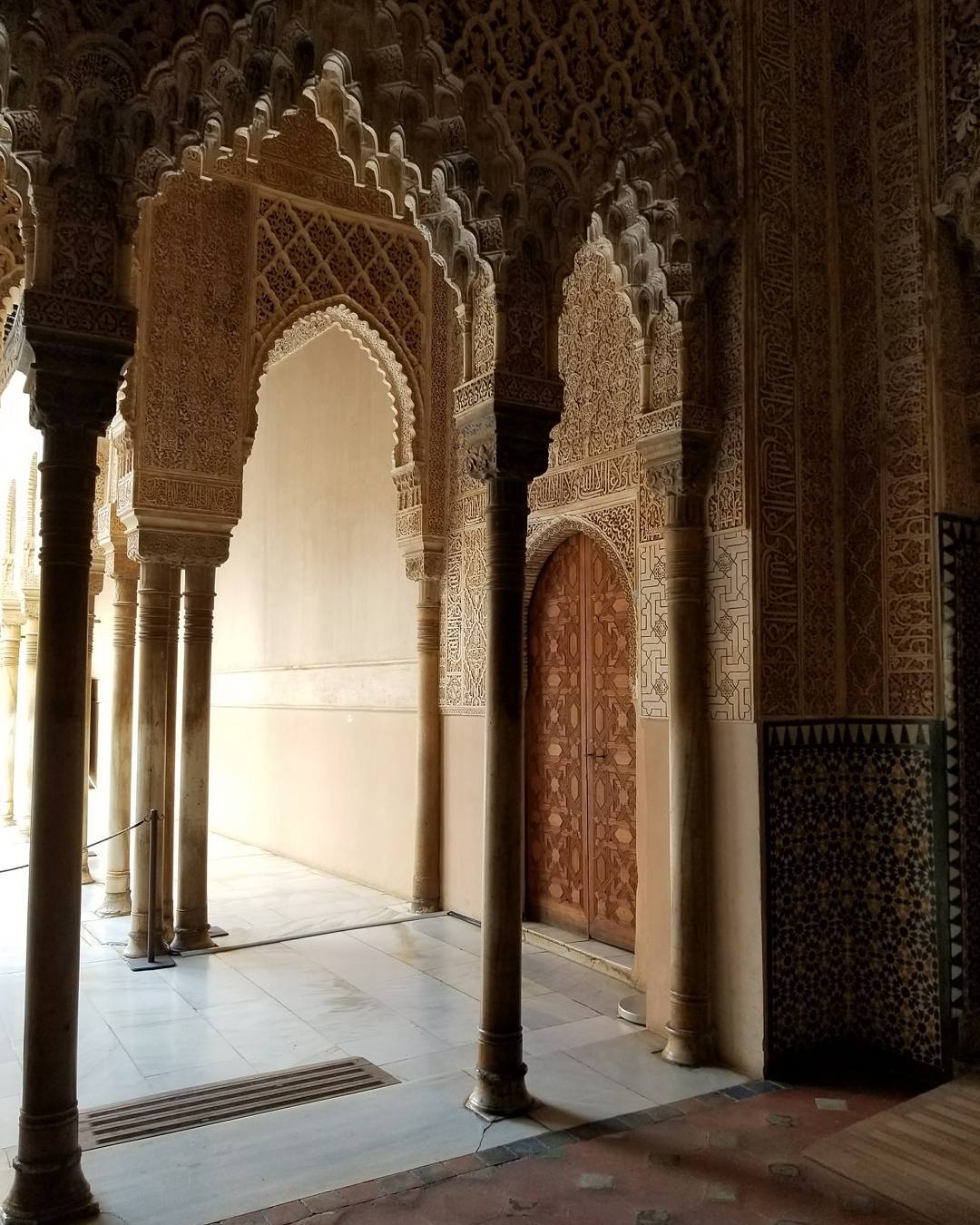
Every few feet, the viewpoint changed and new scenes appeared.
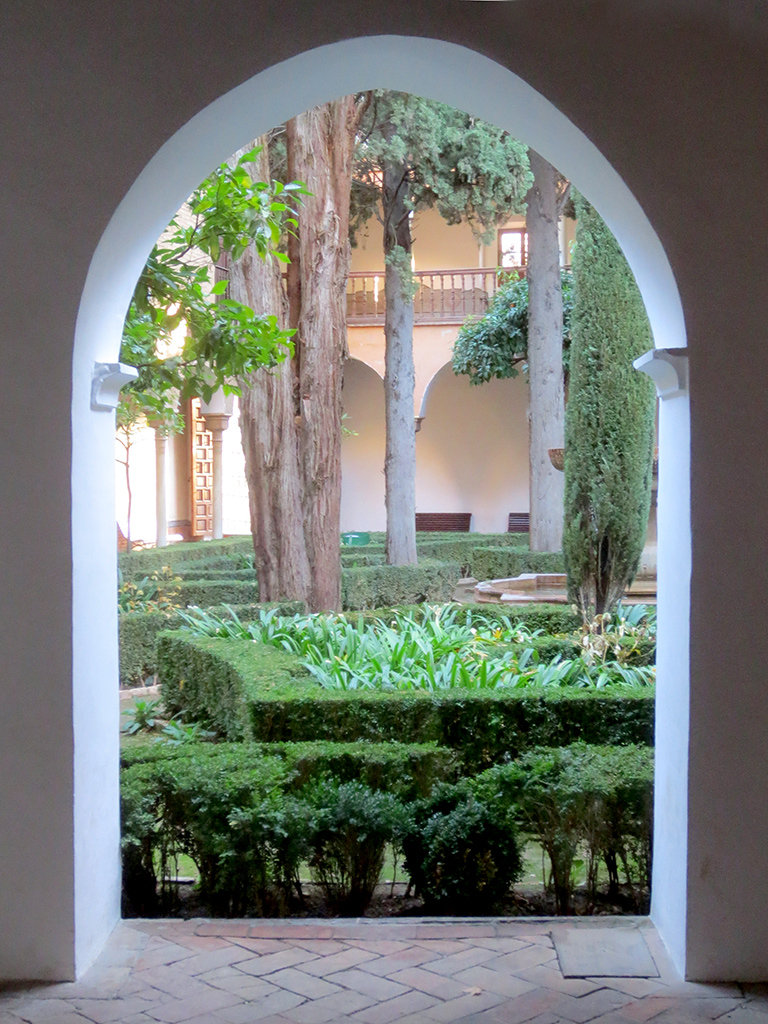
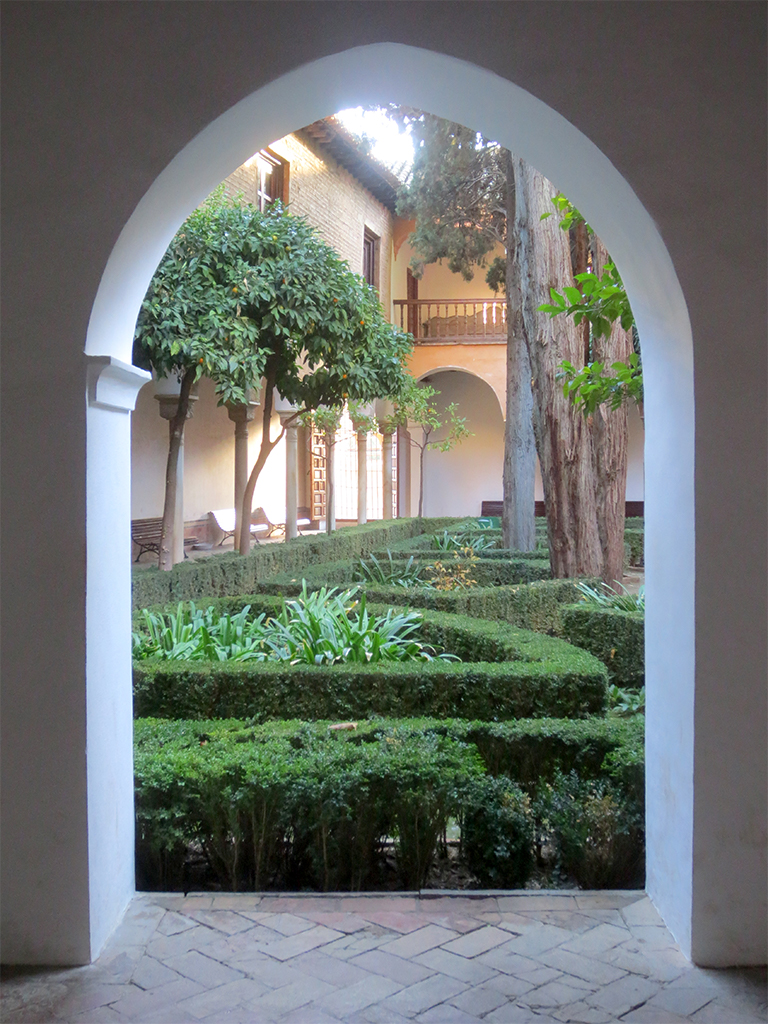
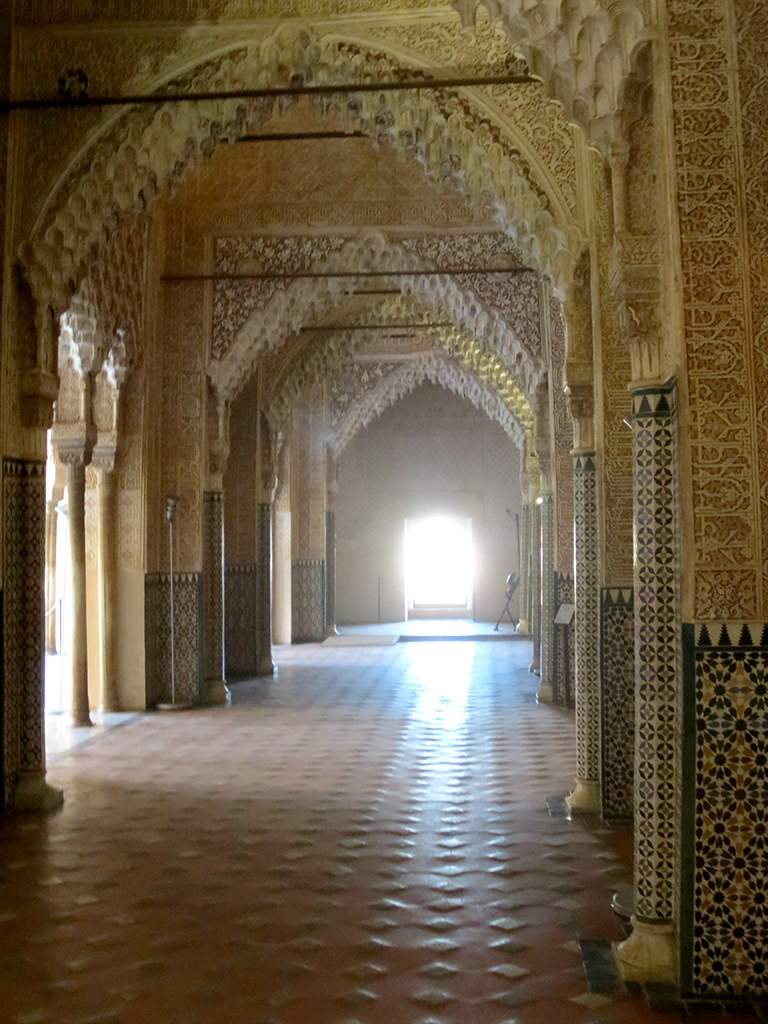
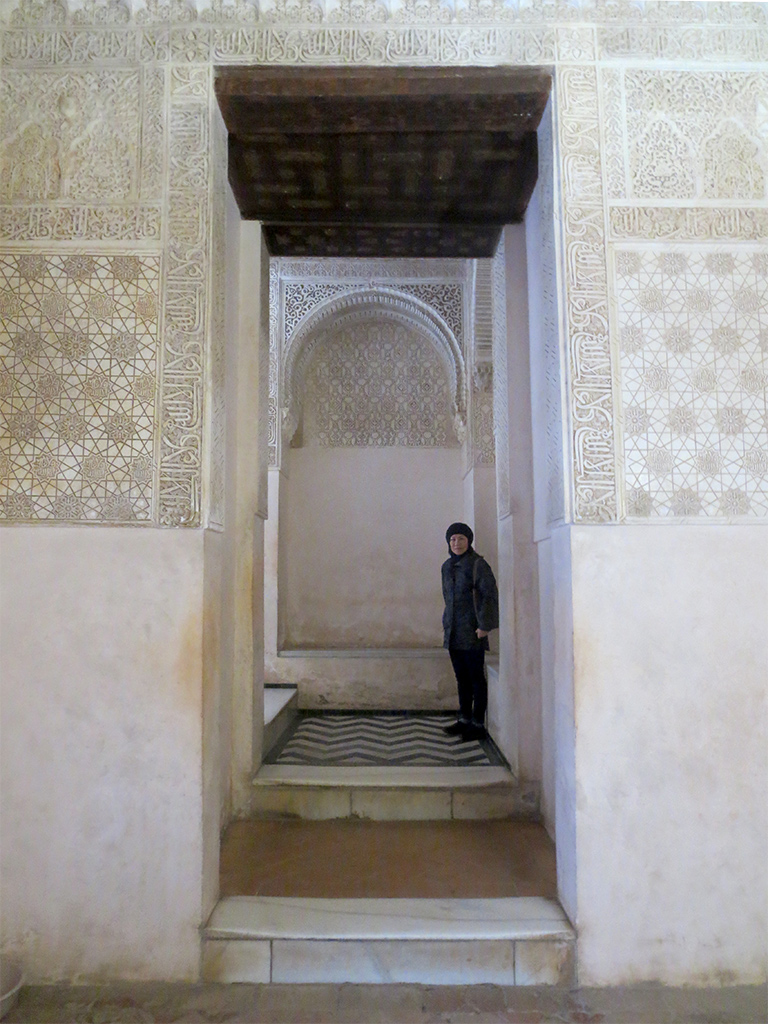
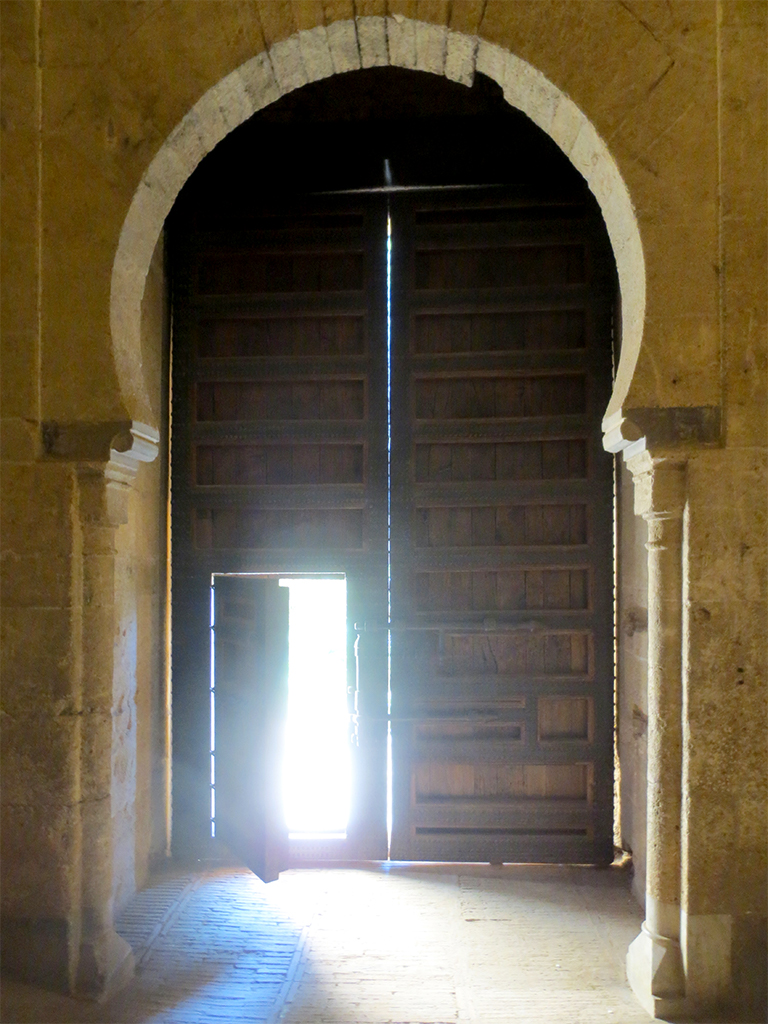
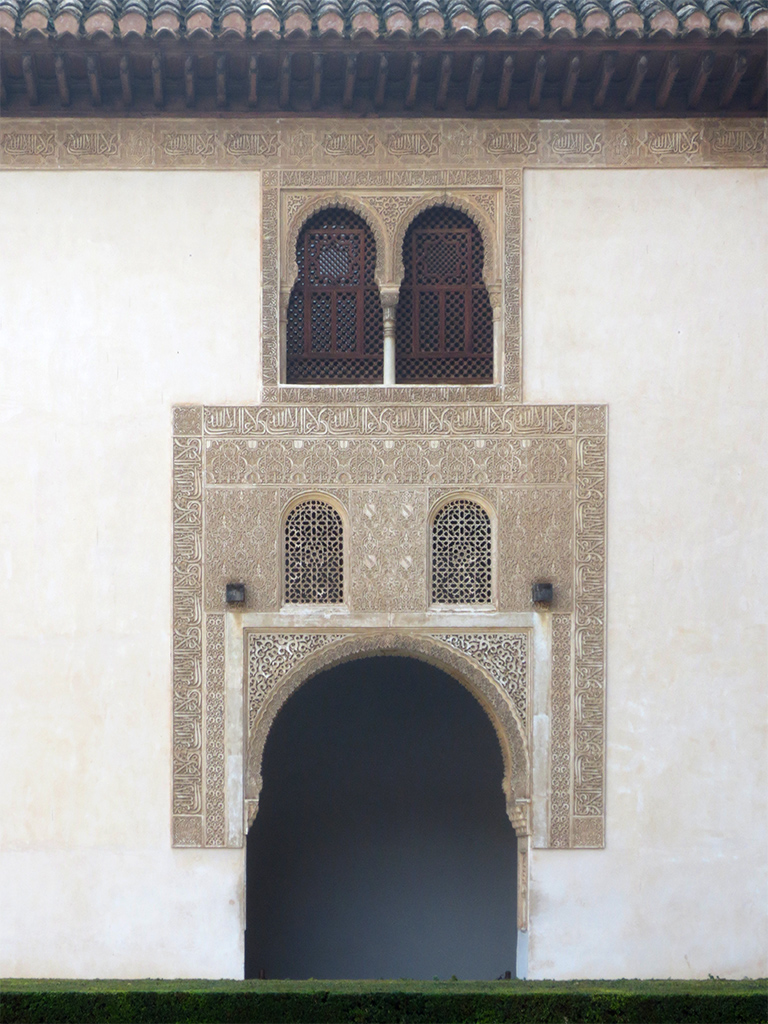
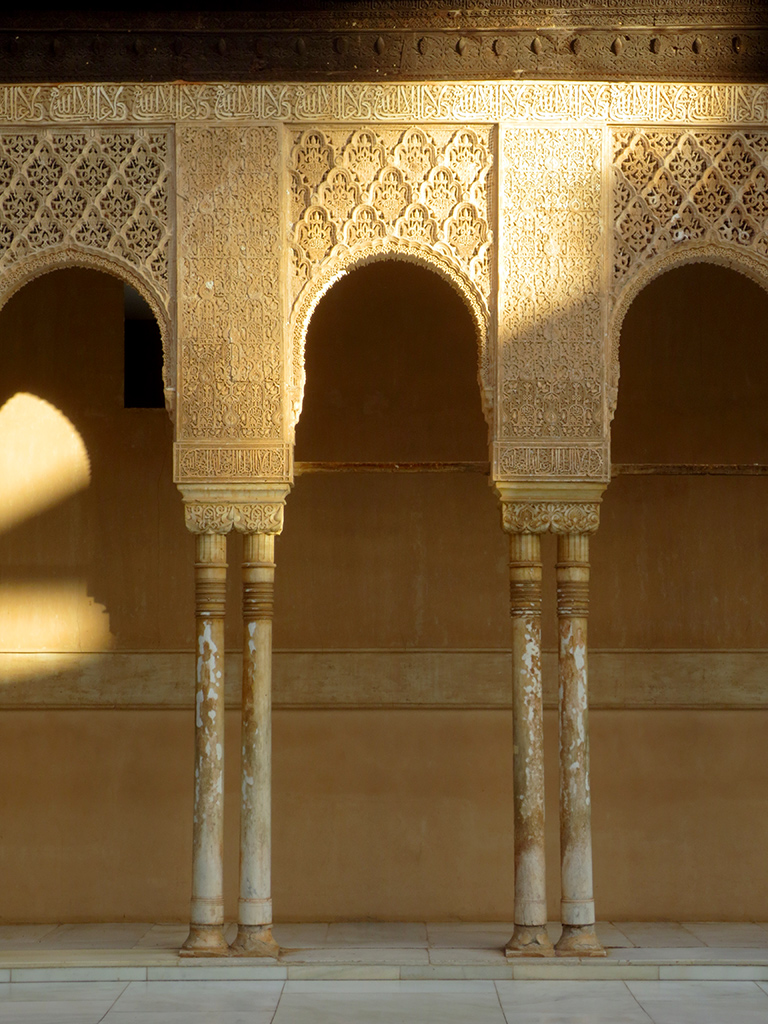
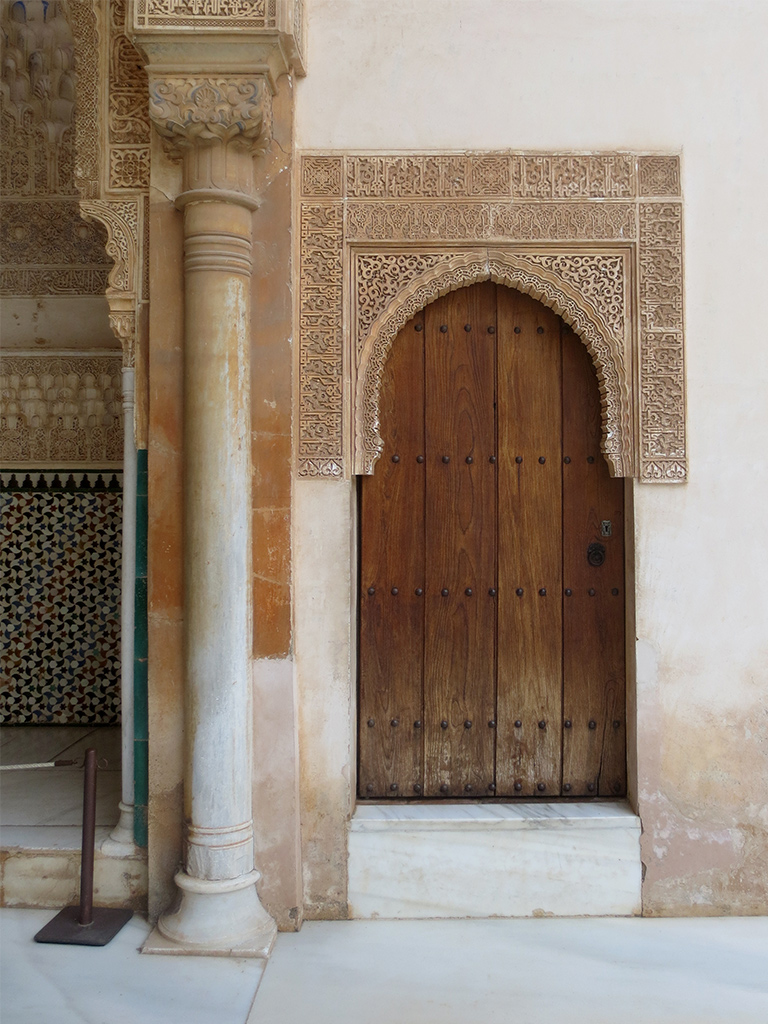
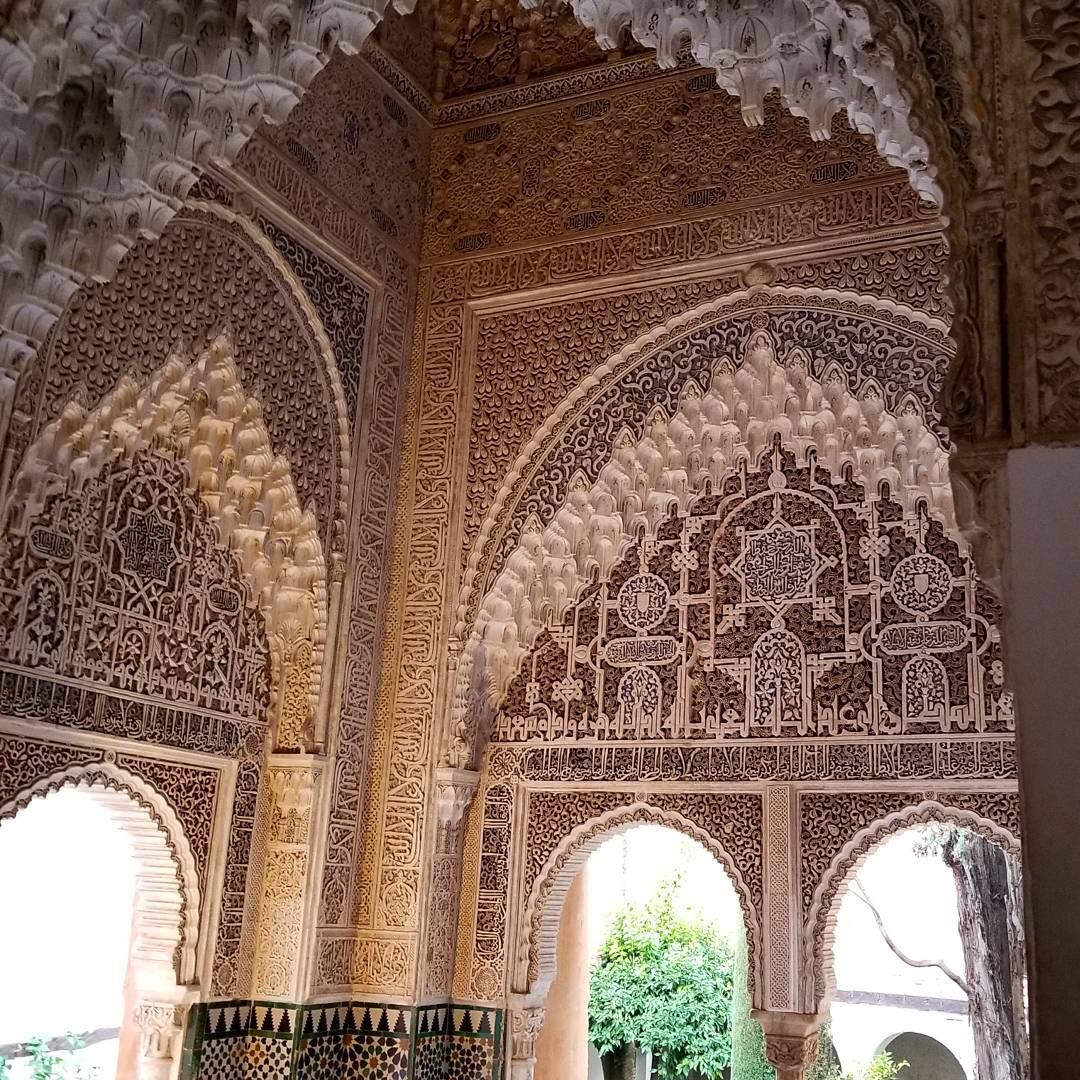
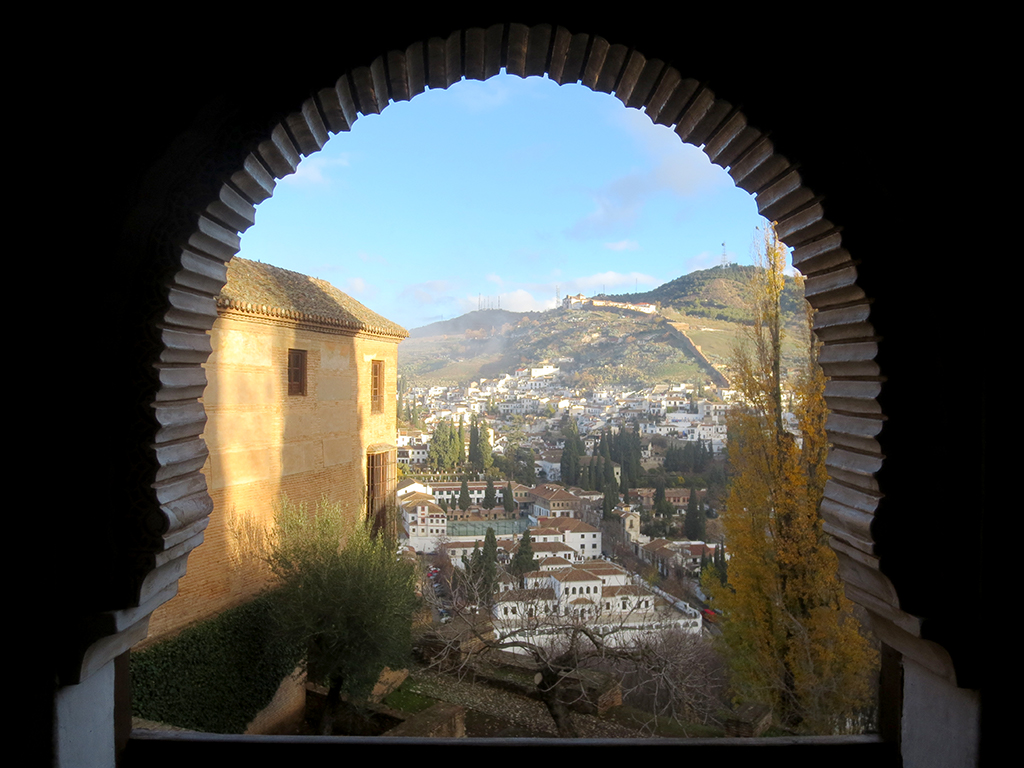
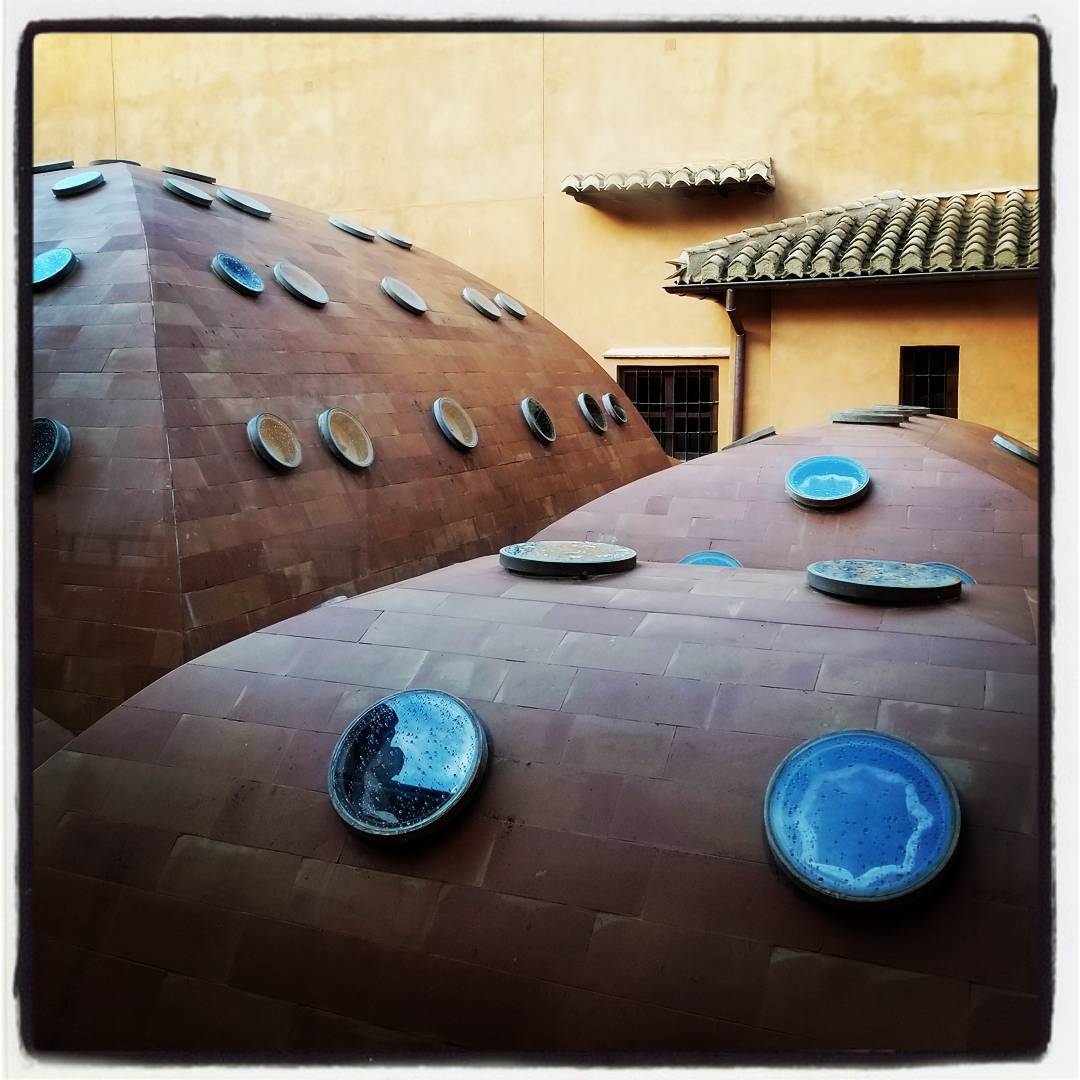
In the 17th Century, the later Catholic rulers of Granada built the Iglesia de Santa Maria de la Alhambra church on the site of the Alhambra’s former mosque.
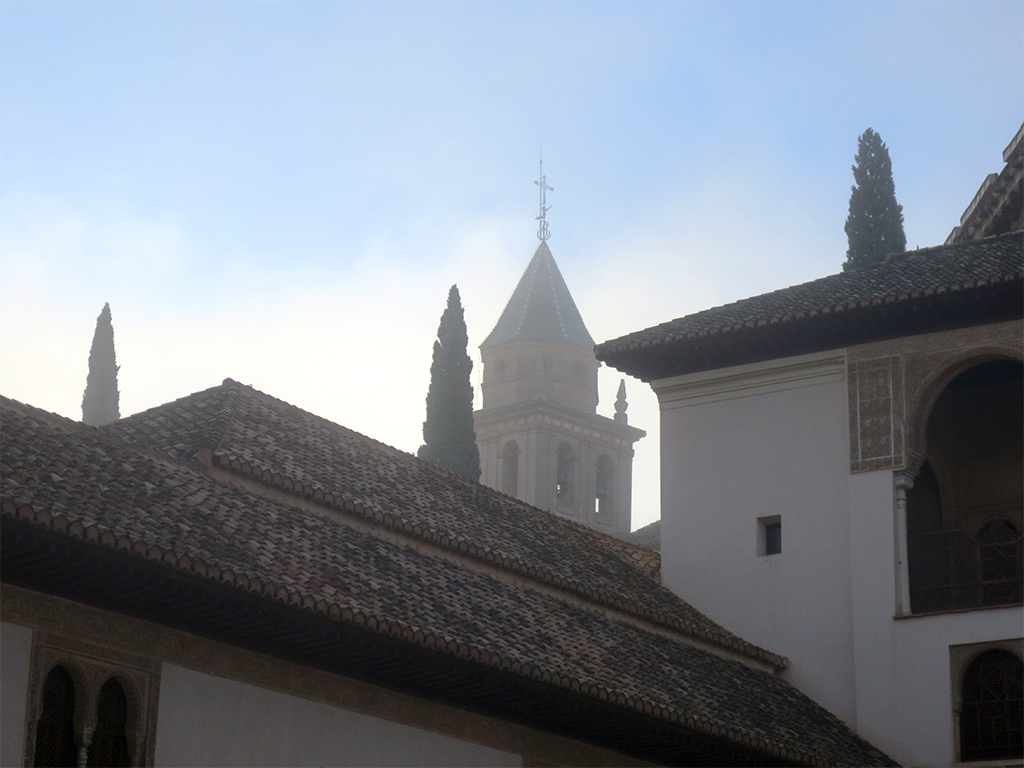
Many cats roam about both inside and outside the Alhambra palace complex.
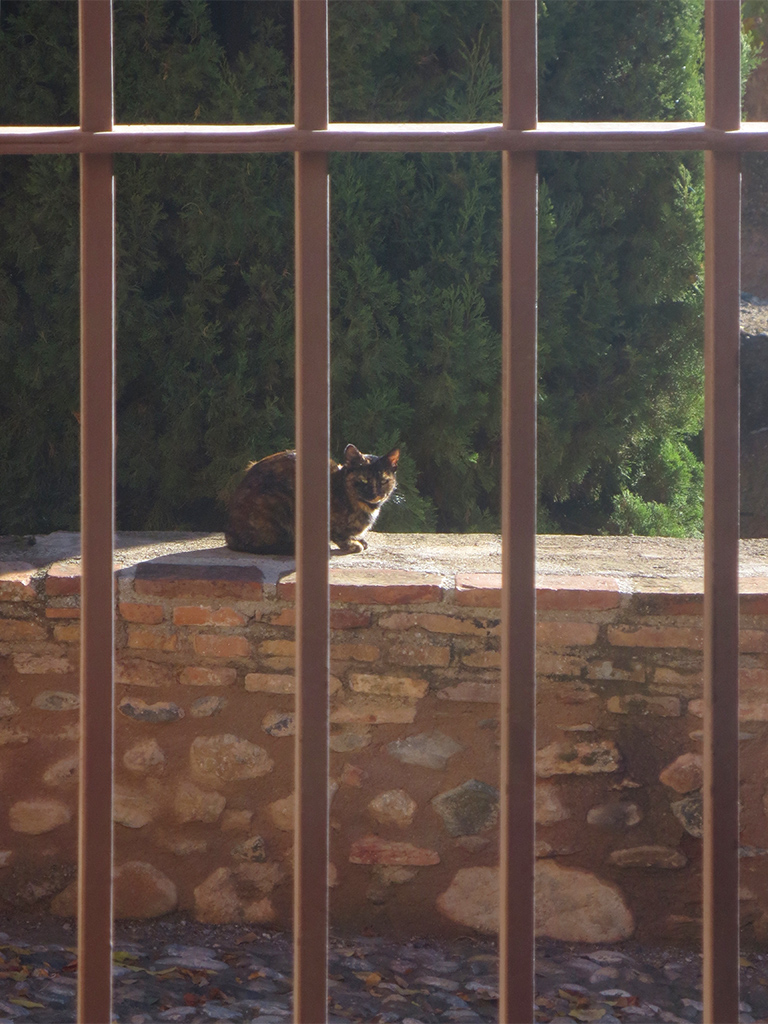
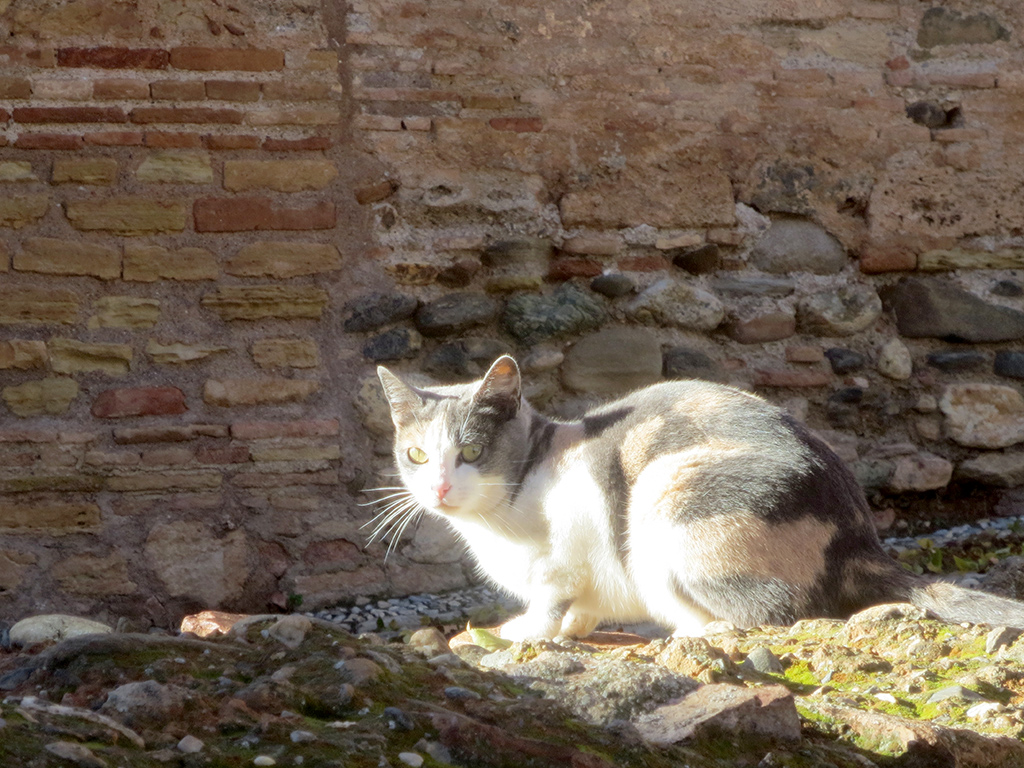
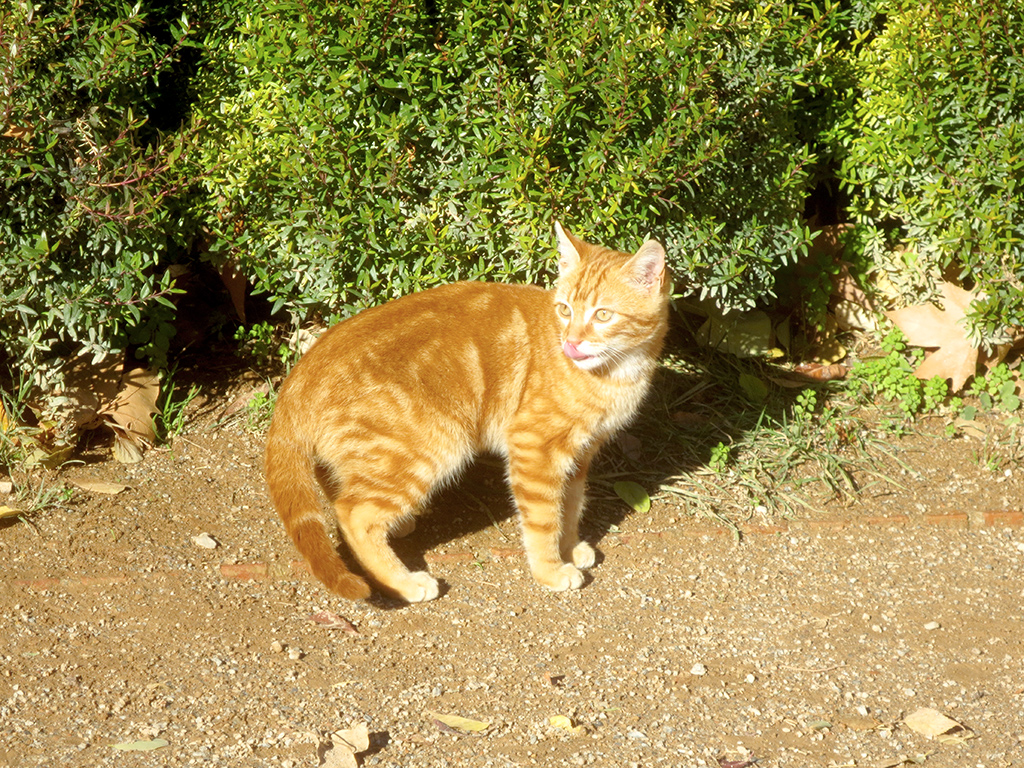
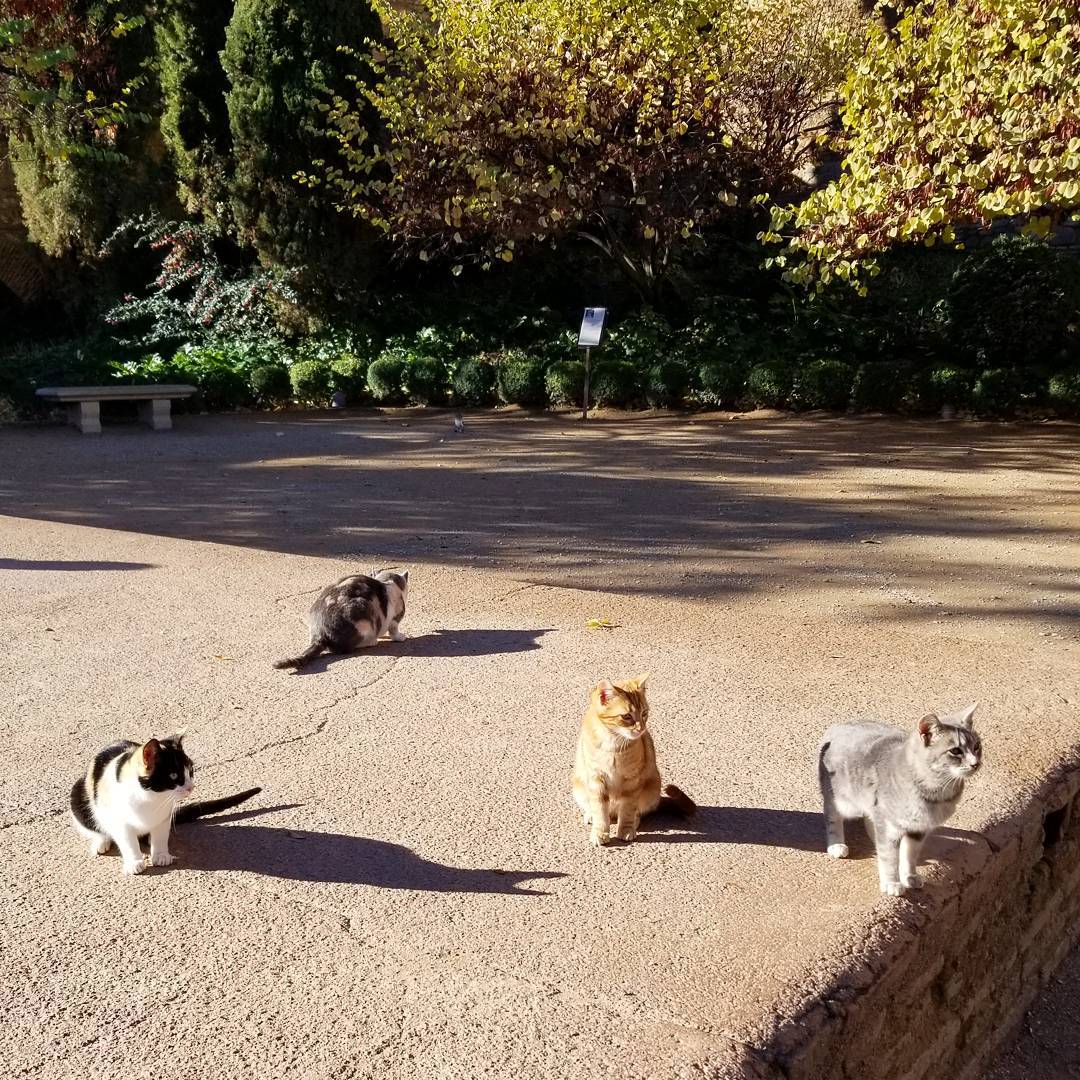
On exiting the formal palaces, we emerged into the surrounding gardens. We explored only a little of the vast Generalife gardens, which were beautiful though not at their full flowering peak as they would be in the spring or summer.
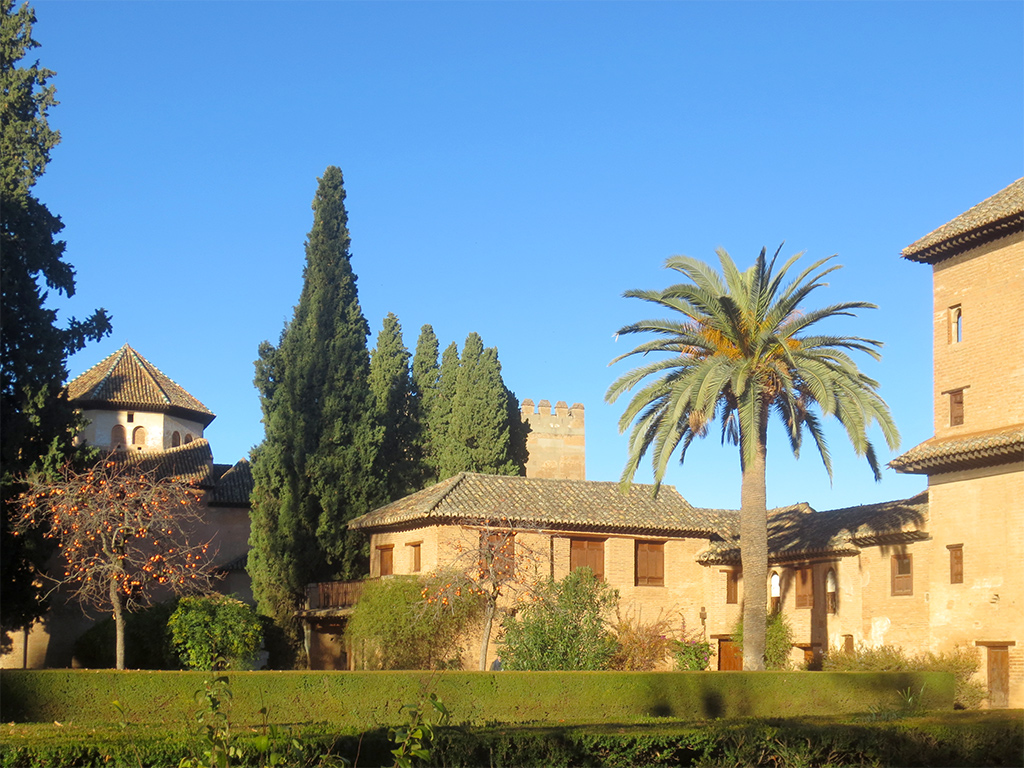
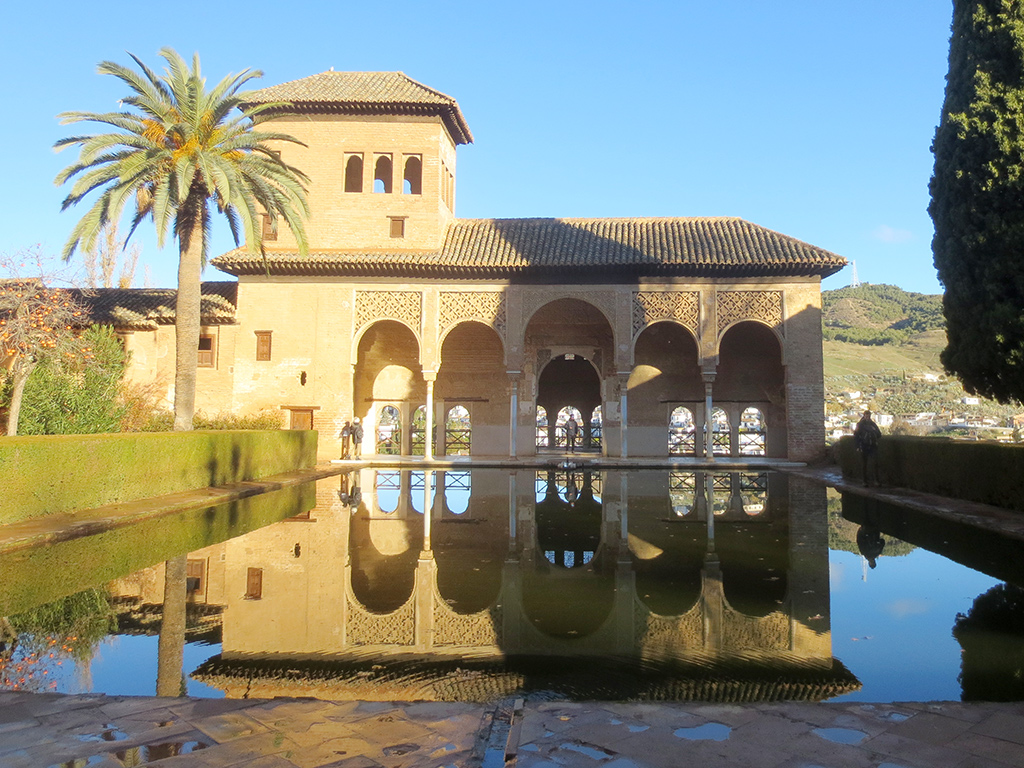
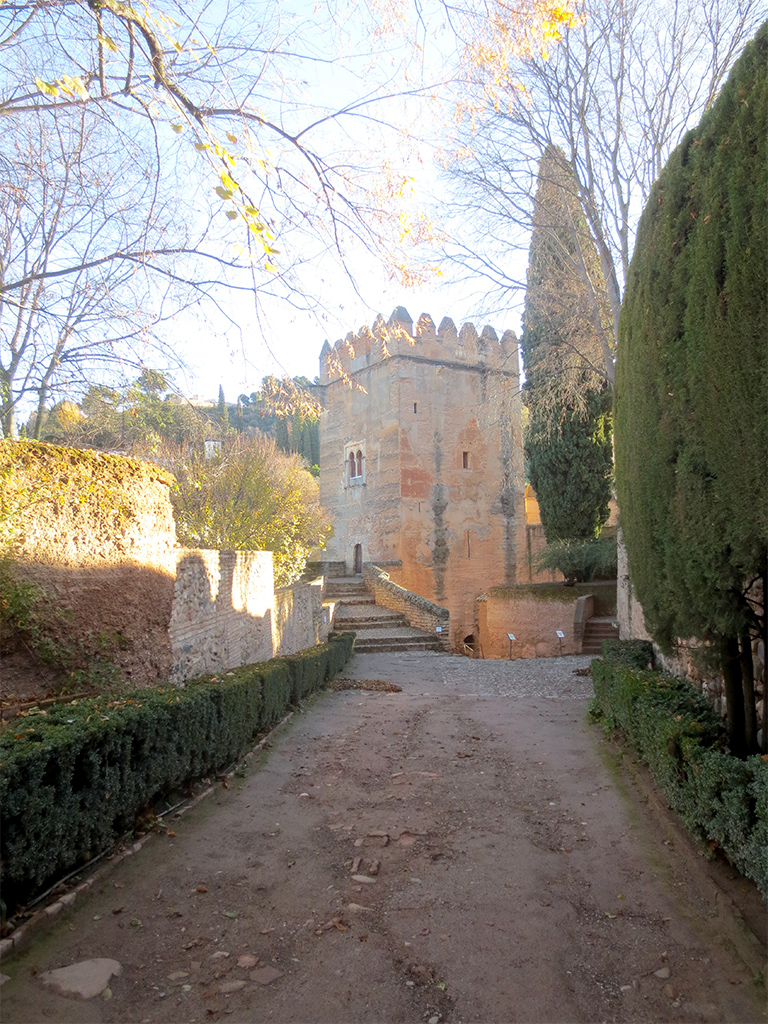
The final part of our visit was to the Alcazaba, the fortress portion of the Alhambra.
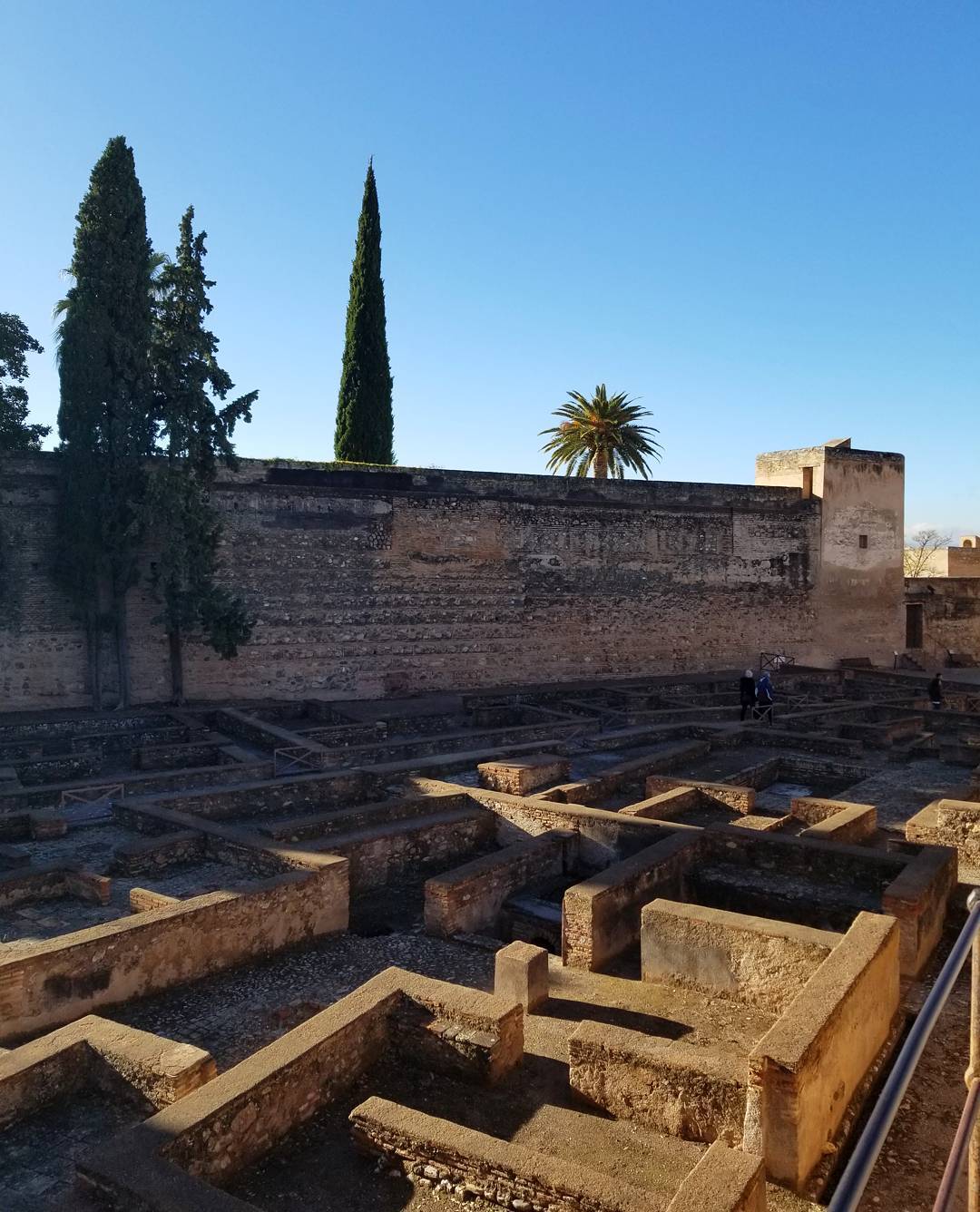
Like so much else in Granada, this was essentially a long climb, taking us up many flights of stone stairs to higher and higher ramparts, each with their own great views.
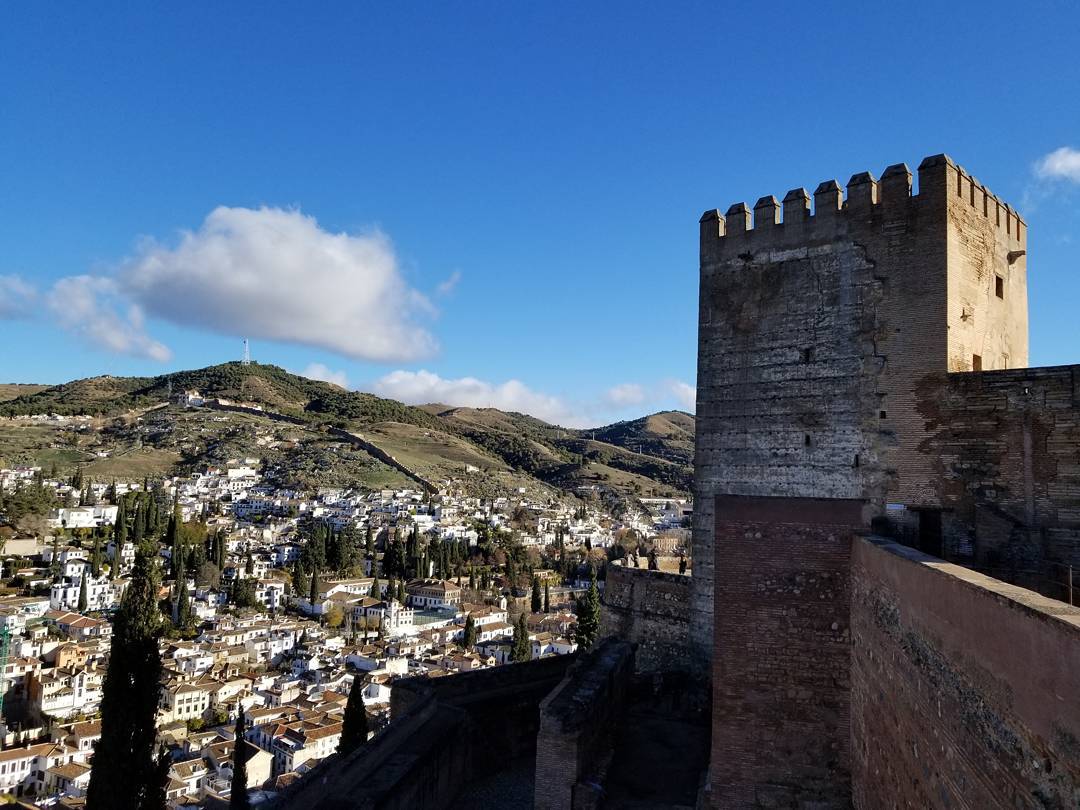
Eventually we climbed the final and tallest tower, the Torre de la Vela (Watch Tower). This tower, decorated with flags, is visible from much of Granada, and we’d been seeing it for days, always with tiny people on top. Now we were the those tiny people.
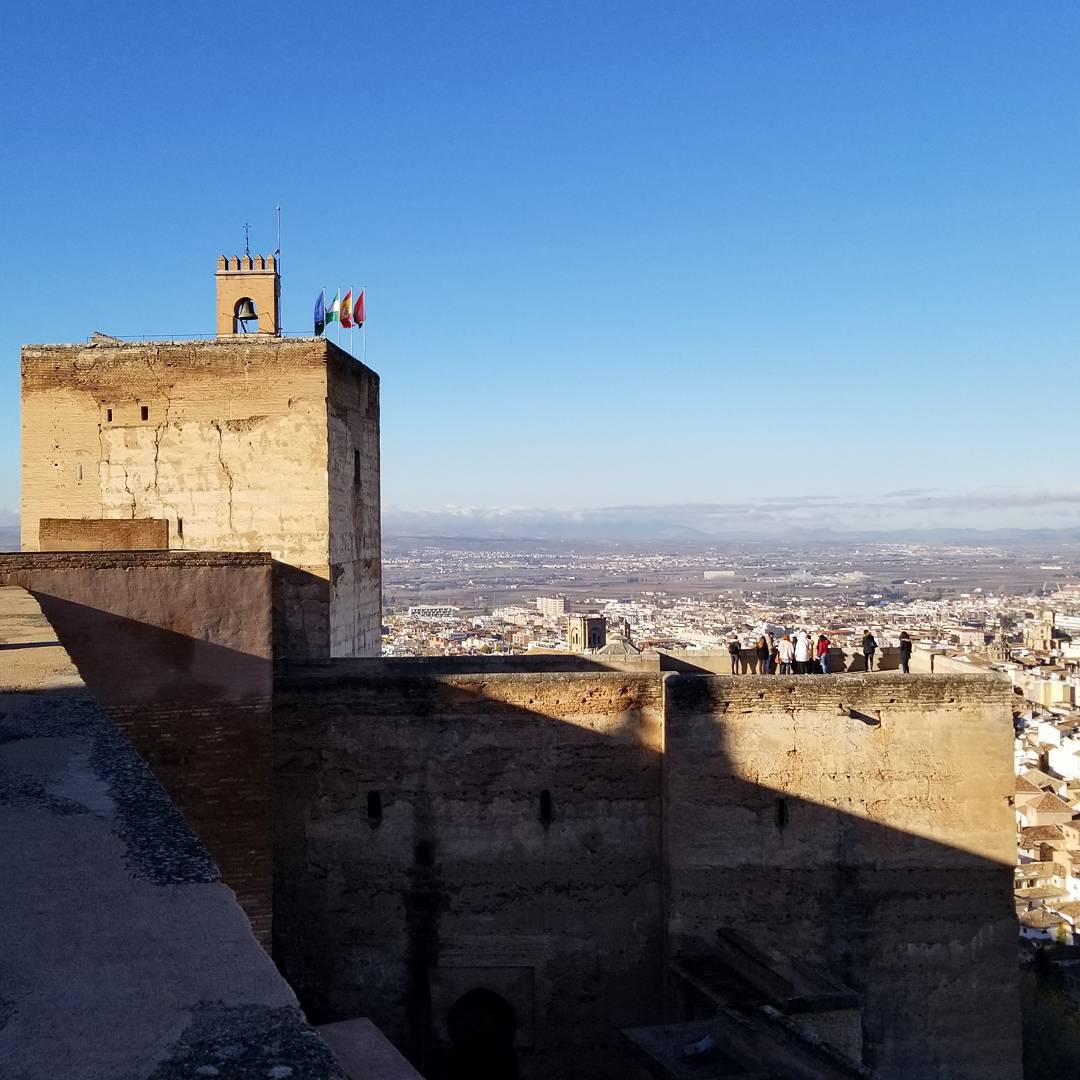
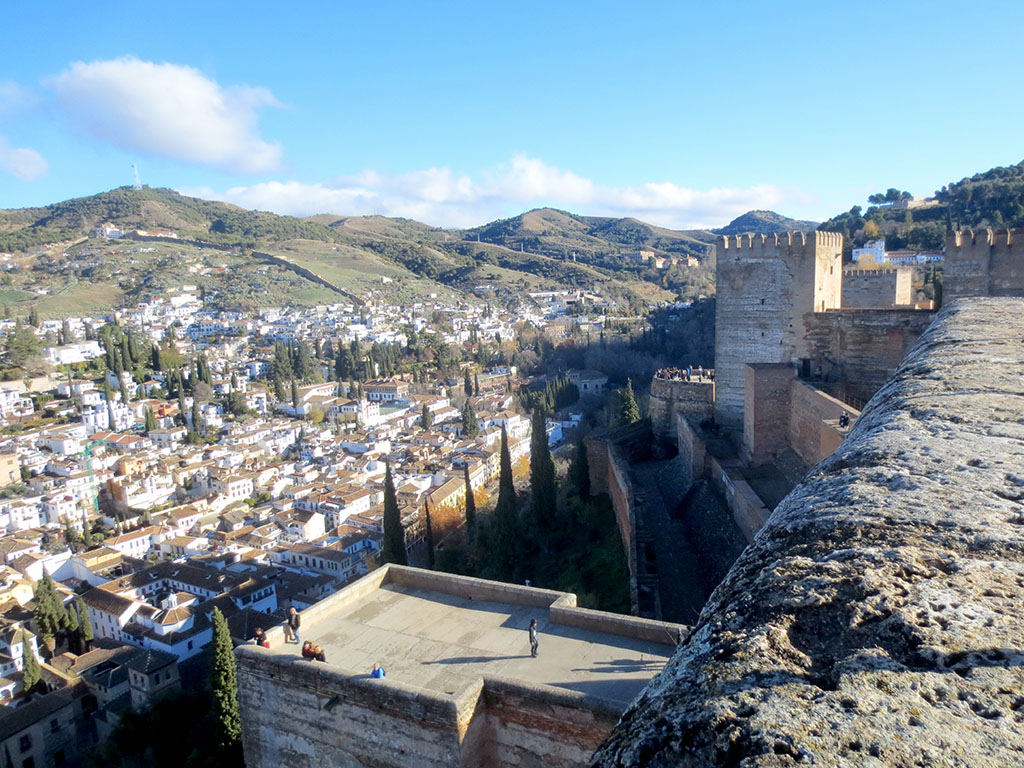
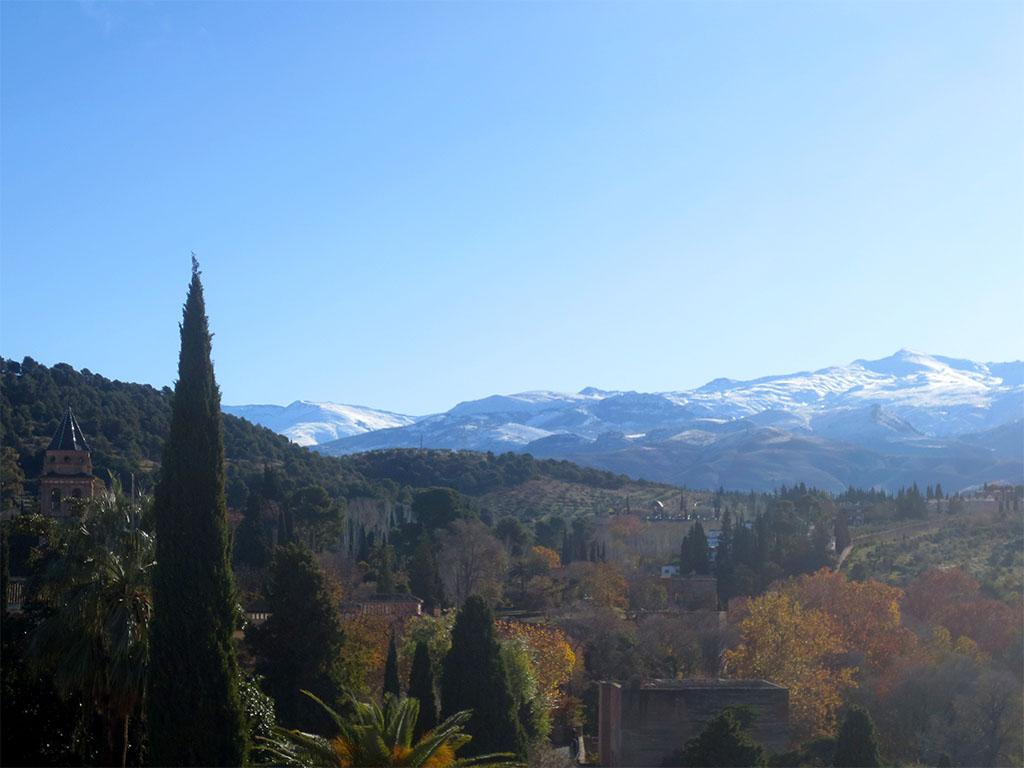
It was unexpectedly sunny, calm and warm up up on the tower. Looking down, it is difficult to imagine any army being foolhardy enough to attack this place.
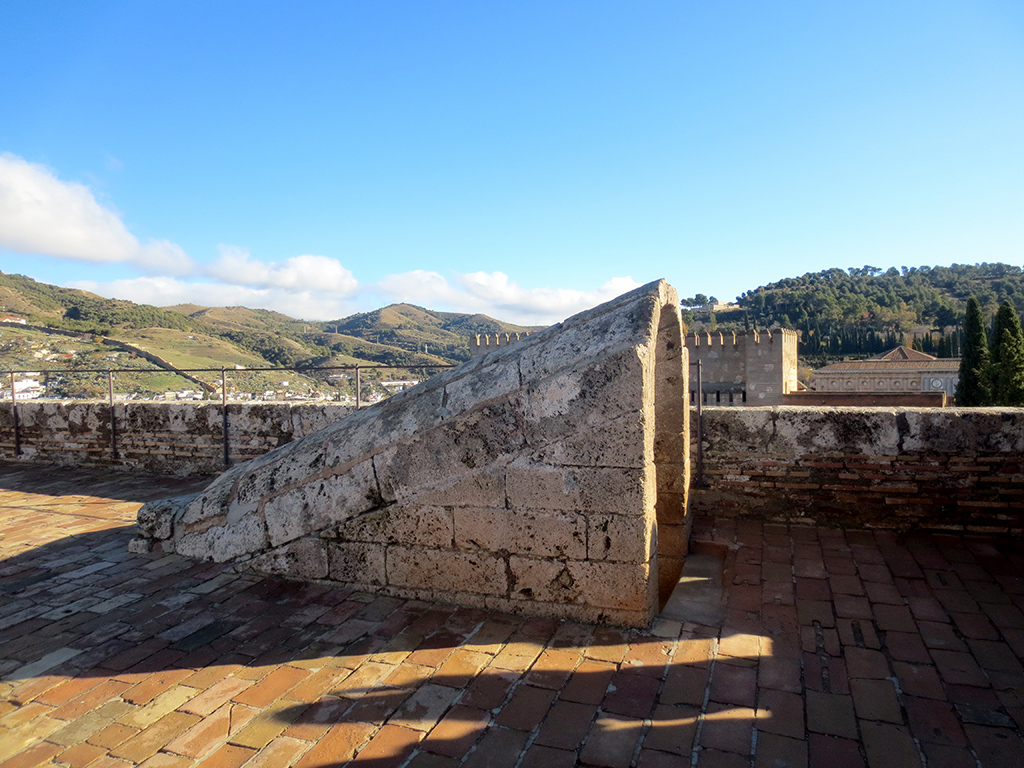
The last part of the fortess was surprisingly green, and there was one final attractive garden atop the walls to pass through on our way back down to the city for well-deserved beer, food and rest.
